Social-Emotional Learning Resources
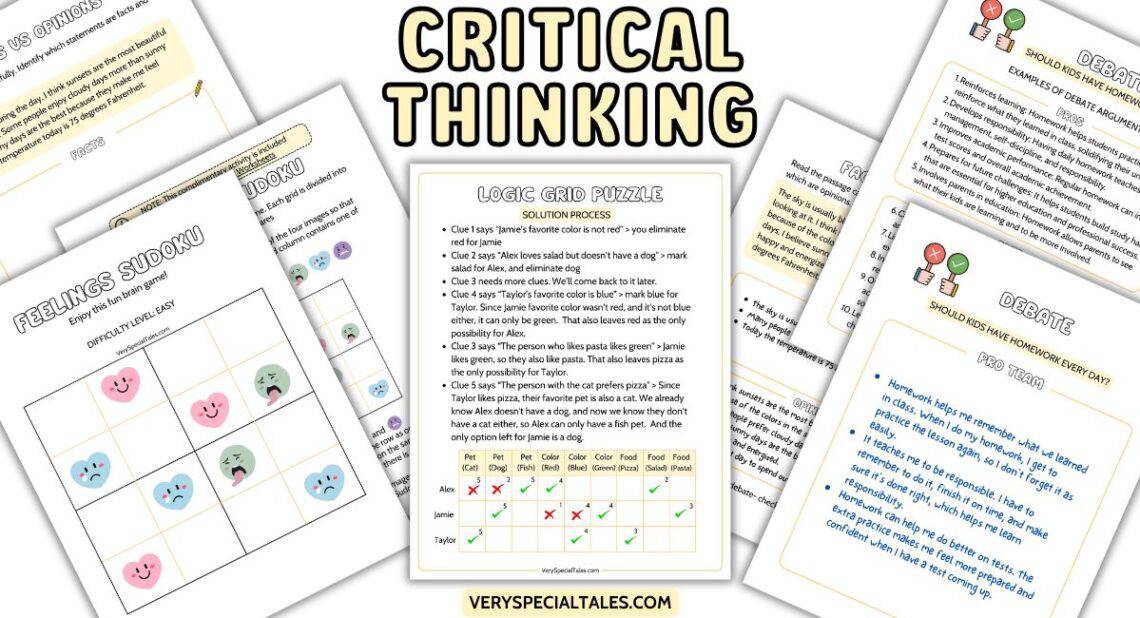

36 Fun Critical Thinking Games and Activities for Kids (Printable)
Critical Thinking Games & Activities for Kids: Critical thinking skills are widely recognized as essential to equip children for learning, in and outside the classroom, and for modern life. In this post, we will explore what critical thinking means, why it is so important, and how to help build these skills in children with 36 fun critical thinking activities. You will also be able to download a free worksheet with some of the activities mentioned in the post.
Table of Contents
- What is critical thinking?
- Why are critical thinking skills important?
- How can we help build the skills and mindset for critical thinking?
- 36 Fun critical thinking activities for kids
- Critical thinking worksheets download
What is Critical Thinking?
We all know more or less what critical thinking is. So it may surprise you to know that there is no one standard, agreed definition. US philosopher and educator John Dewey first developed the concept in the early 20th century, although he more commonly used the term “reflective thinking”, defined as:
“Active, persistent, and careful consideration of any belief or supposed form of knowledge in the light of the grounds that support it and the further conclusions to which it tends.”
The Reboot Foundation provides a simpler, more contemporary definition:
“We define critical thinking broadly, and we believe it is a type of reflective thought that requires reasoning, logic, and analysis to make choices and understand problems.”
Most experts agree that there are two dimensions to critical thinking:
- Skills, or abilities which can be taught ( such as analysis, inference, evaluation, self-regulation).
- Dispositions, or attitudes, which can be developed ( such as being open-minded, fair-minded, suspending judgement, inquisitiveness).
Skills can be more straightforward to teach, and to measure, than dispositions. But critical thinking skills and dispositions are mutually reinforcing, and should be built together.
One way to explain how critical thinking differs from simply acquiring knowledge is through “Bloom’s Taxonomy”, developed in 1956, and revised to the version below in 2001. The Taxonomy separates out simple memorization of facts, at the base of the pyramid, from the tasks which require progressively more reasoning and reflection: understanding, applying and analyzing knowledge, critically evaluating it and, ultimately, creating new, original work.

Armstrong, P. (2010). Bloom’s Taxonomy. Vanderbilt University Center for Teaching. Retrieved 22 October 2024 from https://cft.vanderbilt.edu/guides-sub-pages/blooms-taxonomy/ Used under a Creative Commons Attribution license.
Why are Critical Thinking Skills Important?
Dewey’s work on critical thinking helped to transform education, from a system built around rote-learning, memorization and repetition of learned facts, to a system which values students’ ability to think for themselves.
Now, critical thinking skills provide an essential basis for future learning. But critical thinking is important for so much more, beyond the classroom.
Long before the internet or social media, critical thinking was seen as important for the health of democracy.
Now it is recognized as a “ 21 st century skill ” – the set of abilities and knowledge that are essential for individuals to thrive in the modern world.
When we think about children growing into teenagers, and encountering the tsunami of information, misinformation and disinformation directed to them through social media, equipping our children to grow up as critical thinkers is an essential life skill.
How Can we Help Build the Skills and Mindset for Critical Thinking?
The abilities and attitudes necessary for critical thinking begin to develop early . By as early as age 3, children understand that people sometimes communicate inaccurate information, and that some individuals are more reliable sources than others.
And the critical thinking journey never really stops: it is part of early childhood education, throughout the school years, life outside the classroom, and at the university level, where critical thinking can be essential to success.
We have seen that critical thinking is about both skills and mindset. The best way to support critical thinking is to work on both acquiring the skills necessary for critical thinking (e.g. analysis, inference, evaluation, self-regulation), and encouraging the attitudes needed to think critically (e.g. being open minded, fair minded, and curious).
This can be practiced in the learning of subject matter across all subjects, and beyond the classroom, in day to day life. The more that children ask “why?”, the more opportunities there are to support them in their critical thinking journey.
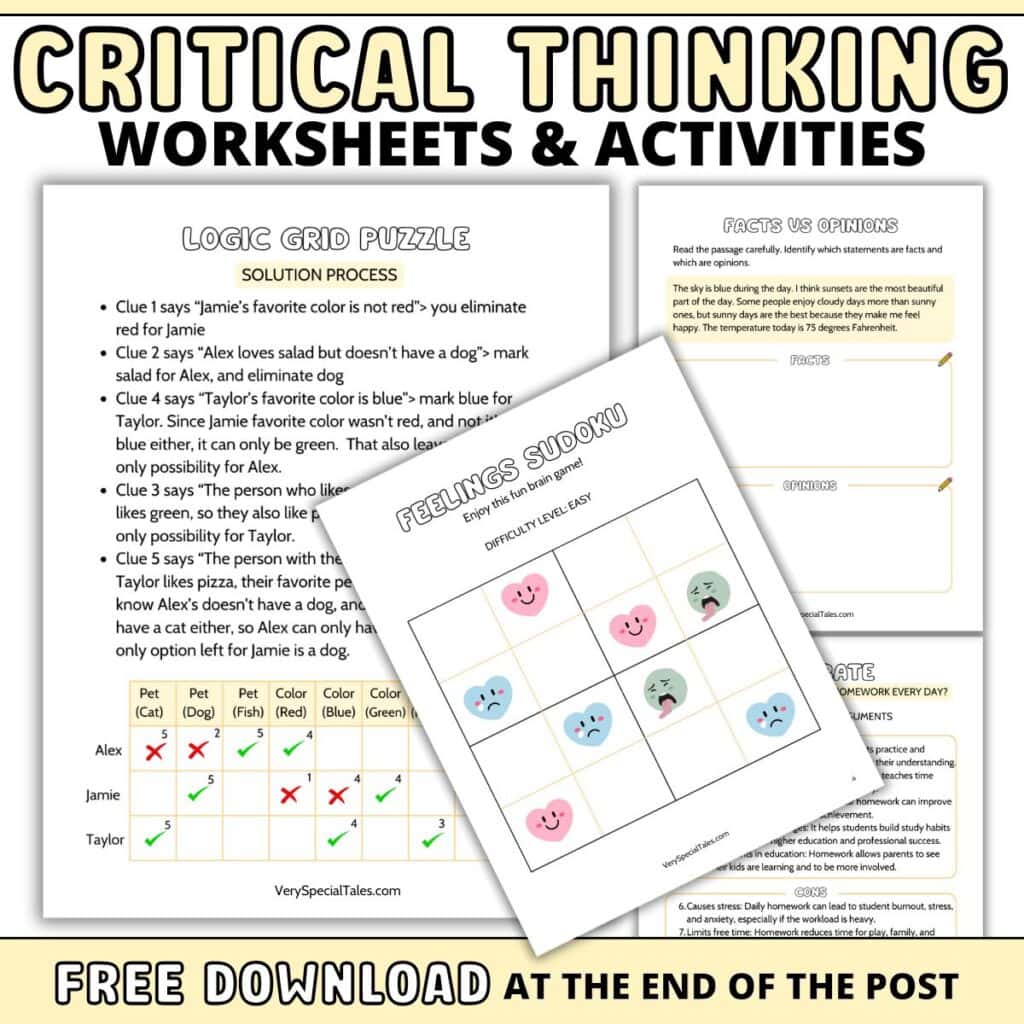
36 Fun Critical Thinking Games and Activities for Kids
Now that we have reflected on what critical thinking is and why it is so important for cognitive development, let’s jump in and start practicing a whole set of engaging and fun activities to help children strengthen these skills and develop a critical thinking mindset.
These activities can be used as building blocks and inspiration, in the classroom and at home. They can be woven in to wider learning, or used as creative ideas to have family conversations at the dinner table.
Fun Simple Critical Thinking Activities for Kids
1. Sorting Objects
Strengthen logical reasoning by encouraging kids to classify items based on attributes like size, color, or shape, helping them identify patterns and make connections.
For example, ask children to sort a group of buttons of different colors, sizes, and shapes, and then explain the reasoning behind their sorting criteria.
2. Count and Analyze Patterns
Use colored beads to create sequences (e.g., red, blue, red, blue) and ask children to predict what comes next, or to create their own repeating patterns.
3. Find the Odd One Out
Present a group of objects like a banana, an apple, a car, and ask children to identify which one is the odd one out and explain why.
4. Who Am I?
A child thinks of an object, and the others ask yes/no questions to figure it out, such as “Is it something you find outside?” or “Can you eat it?”
5. “What If?” Questions
This type of game encourages curiosity and deeper thinking by exploring open-ended questions, much like the Socratic method, encouraging students to reason and arrive at their own conclusions.
Ask children questions such as:
- What if animals could talk? How would that change our relationship with them?
- What if there were no rules? What do you think society would look like?
- What if everyone had the same job? How would our world look?
6. Story-building with Critical Questions
- Example : Build a short story with a problem, like “The dog is lost,” and ask children to discuss the cause, what steps can be taken to find the dog, and the potential outcomes.
7. Problem-Solving Storybooks
You can use your usual classroom activities and turn them into problem-solving activities. For example, if you’re reading a book like The Three Little Pigs , you can pause to ask, “What would have happened if the pigs had built their house differently?” This encourages kids to analyze decisions in the plot and think critically about alternative outcomes.
8. Reviewing Evidence (Detective Games)
Create a detective game where children review evidence (footprints, letters) to figure out “who ate the cookies” or another mystery, requiring logical deduction.
Critical Thinking Games & Brain-Teasers
9. Memory Card Games / Matching Card Games
Memory card games are classic games in which children flip over cards to find matching pairs.
Although memory games are more clearly associated with memory skills, they can also support critical thinking by encouraging attention to detail, pattern recognition, and strategic recall of card locations to match pairs efficiently.
For example, instead of flipping cards randomly, kids could start by lifting cards from left to right in each row. This structured approach can help them remember the sequence and location of cards, making it easier to spot matches when a similar card appears later. By developing this strategy, they’re not only improving their memory but also practicing critical thinking through planning and pattern recognition.
10. Scavenger Hunts
To turn a scavenger hunt into a critical thinking activity, add clues that require kids to solve puzzles, interpret riddles, or make inferences to find each item.
For example, instead of simply listing an umbrella, provide clues like “I’m something that keeps you dry in the rain, and you hold me above your head”. You could also add challenges where kids must categorize the items they find by characteristics (like color or texture) or answer questions about why each item might be useful in different situations.
This approach encourages problem-solving, inference, and categorization skills throughout the hunt.
11. Mystery Bag Game
A Mystery Bag game encourages kids to use their senses and deduction skills to identify hidden objects. Place various items in a bag and allow kids to feel each one without looking, prompting them to guess what it is based on texture, shape, or weight. They can ask yes-or-no questions to narrow down possibilities (e.g., “Is it soft?”, “Is it something I can eat? or “Is it something we use every day?”).This activity fosters critical thinking by requiring kids to analyze clues, make inferences, and refine their guesses, enhancing their problem-solving abilities.
12. Puzzle Solving
Puzzles can boost logical thinking and problem-solving skills by encouraging kids to find solutions through trial, error, and reasoning.
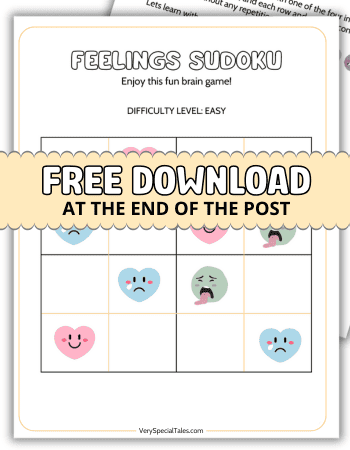
13. Sudoku (Simple)
Sudoku is another great puzzle game that promotes logic, pattern recognition, and problem-solving for children of all ages.
The game can be tailored to various skill levels, making it suitable for all ages: the easiest grids start with a 4×4 layout, perfect for younger kids who are just beginning to explore logical reasoning.
For a fun twist, you don’t even need to use numbers! Simple shapes or colors can replace numbers to create a kid-friendly version, allowing younger children to solve puzzles with familiar objects while developing their reasoning skills.
I’ve included a fun, simple Sudoku activity in your download at the end of this post that younger kids will love.
14. Mystery Number Games
Give a series of clues, like “I’m thinking of a number between 1 and 10, and it’s not even,” and have children ask questions to deduce the number.
15. Logic Riddles or Brain Teasers
Riddles and Puzzles are a fun way to present a mental challenge to kids. They are widely available in puzzle books and logic activity books for children.
Examples of riddles:
- “What has keys but can’t open locks?” and have children reason out the answer by thinking about the word “piano.”
- “I speak without a mouth and hear without ears. I have no body, but I come alive with the wind. What am I?” (this one is echo, in case you didn’t guess it)
16. Lateral Thinking Puzzles .
Lateral thinking puzzles are puzzles designed to challenge traditional thinking patterns by encouraging creative, outside-the-box solutions. Instead of straightforward logic, these puzzles require unconventional reasoning and unique perspectives, pushing kids to think beyond obvious answers.
For example, a lateral thinking puzzle might present a scenario where only by reinterpreting or reframing details can the solution be found, such as:
- “A man walks into a town on Friday, stays for three days, and leaves on Friday. How is this possible?”(Answer: The man’s horse is named Friday.)
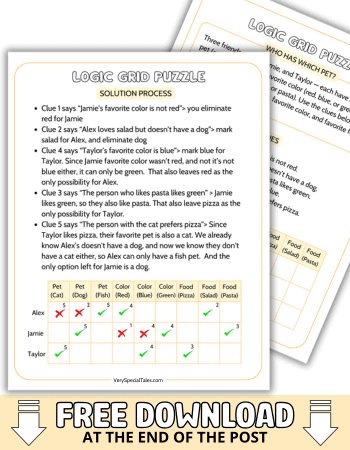
17. Logic Grid Puzzles
Logic grid puzzles are brain-teasers that involve filling in a grid based on a set of clues to determine relationships between different categories or items.
For instance, you might have a puzzle about three friends, each with a different pet, favorite color, and favorite food. Using the clues provided (e.g., “The person with the cat doesn’t like pizza”), you can eliminate possibilities and make connections until all categories align correctly.
These puzzles develop critical thinking and deductive reasoning skills, as solvers must analyze the clues, make inferences, and systematically rule out options to find the solution.
Your free Critical Thinking Worksheets download, at the end of this post, also includes an example of a logic grid puzzle.
18. Maze Challenges
Provide a printed maze and ask children to solve it by choosing the correct path, discussing their strategy for avoiding dead ends and reaching the goal.
Our next two activities are classic strategy games that promote strategic planning and evaluation:
Chess is a timeless game of strategy, widely available both digitally and physically in educational formats. Set up a chessboard and teach children the basic moves, then have them play a game where they practice planning several moves ahead, anticipating their opponent’s strategy.
20. Checkers
Checkers is another, simpler strategy board game. Play a simple game of checkers with a child, encouraging them to think one or two moves ahead to capture pieces and block their opponent.
21. Role-Playing Games
Role-playing games (RPGs) are games where players assume the roles of specific characters, often in a fictional or fantastical setting, and make decisions that shape the story or world around them. In RPGs, players use imagination and creativity to develop characters with unique abilities, personalities, and goals, often collaborating to solve challenges or quests.
There are different types of RPGs, such as:
- Tabletop RPGs (e.g., Dungeons & Dragons ), where players narrate actions and decisions guided by a game master.
- Live-action RPGs (LARPs) , where players physically act out their characters’ actions.
- Video Game RPGs (e.g., Final Fantasy , – although note that while previous editions have been mostly young teen-friendly, some editions are rated M / R13. For fully kid-friendly video RPGs, you check out Starport or Kids on Bikes.
RPGs, like tabletop and video game formats, can be safe and valuable for teaching critical thinking, teamwork, and creativity, with a few guidelines:
- Age-Appropriate Content : Choose RPGs with themes and language suitable for the classroom.
- Screen Time : Balance video game use with other activities to avoid excessive exposure.
- Safety in Live-Action : For LARPs, set clear boundaries to ensure a safe environment.
- Classroom-Friendly RPGs : No Thank You, Evil! and Rory’s Story Cubes promote storytelling and problem-solving.
- Educational RPGs : Classcraft uses RPG quests to support learning goals and teamwork.
- Simple Role-Playing Activities : Use history or science scenarios to bring content to life through role-play.
22. Escape Rooms
Participating in a escape room activity is an excellent way for older students to practice critical thinking skills. Participants are locked inside a themed room and must work together to solve puzzles, find clues, and accomplish tasks within a given time limit in order to “escape” from the room. Escape rooms are great team-building games and promote critical thinking through:
- Problem-Solving : Players must analyze clues, recognize patterns, and piece together information to advance.
- Logical Reasoning : Each puzzle builds on the next, requiring logical deduction to understand how clues relate.
- Analytical Skills : Players break down complex information, assess details carefully, and synthesize clues to solve each step
- Teamwork : Players need to communicate effectively, share ideas, and build on each other’s strengths to solve complex problems together.
- Time Management : The time constraint encourages quick thinking and prioritizing.
Let’s also explore some educational games and activities!
Critical Thinking Activities for the Classroom
23. Improvised Building Activity (STEM – Science Activity )
Provide children with a box of mixed-up items like straws, paper clips, and rubber bands, and ask them to build a structure that can hold a small toy car, encouraging problem-solving.
24. Guess the Cause and Effect / Scientific Inquiry Activities
Engage kids to explore relationships by predicting outcomes, testing hypotheses, and observing results, strengthening their understanding of cause and effect through hands-on discovery.
Some cause-effect activity examples:
- Sink or Float : Have kids predict whether various objects (like a coin, sponge, or apple) will sink or float, then test each item in water and observe the outcomes.
- Plant Growth Experiment 1 : Plant seeds in different conditions (sunlight vs. darkness or water vs. no water) and have kids guess which plants will grow best, tracking progress over time.
- Plant Growth Experiment 2: Show kids a plant that’s wilting and ask, “What do you think is happening here?” Let them suggest reasons like “It needs water” or “It’s too sunny,” and then test their hypothesis.
- Ball Drop Test : Ask kids to predict which will bounce the highest, a tennis ball, basketball, or a bouncy ball. Then perform the experiment by dropping them from the same height, to see if their predictions were correct.
25. Simple Coding (Logic-Based)
Use a coding game like “Scratch Jr.” to have children sequence blocks to make a character move in a specific direction, reinforcing the concept of logic and order. Some examples of other coding apps for kids are Scratch, Code.org, or Tynker.

26. Facts vs. Opinion (Worksheet)
Fact vs. Opinion activities help kids learn to tell the difference between objective truths and personal viewpoints, which is essential for critical thinking. By distinguishing facts—things that can be proven true—from opinions, which reflect personal feelings or beliefs, kids become better at evaluating information.
These activities teach them to look for evidence, question sources and understand that not everything they hear or read is a fact, which is a valuable skill in everyday decision-making and understanding of the world around them.
You can download a simple Facts vs Opinion activity to add to your critical thinking classroom games at the end of this article.
27. Observation Journals
Observation Journals are a great critical thinking exercise, encouraging kids to record daily observations and reflect on details in their surroundings. This practice sharpens mindfulness, enhances analytical skills, and prompts kids to notice patterns, make connections, and express unique perspectives.
Observation journals can include prompts like, “What did you notice on your way to school?” or “Describe something interesting you saw today.”
This versatile activity can be used for nature walks, scientific observations, or even social settings, making it a fun and educational habit.
28. Simple Flowcharts
Simple Flowcharts are an excellent tool for helping kids visualize steps in a process, enhancing their problem-solving and critical thinking skills.
Creating flowcharts teaches them to break down tasks into manageable parts, understand sequences, make logical connections between actions, and practice decision-making. This exercise can be used for anything from illustrating everyday life routines to mapping out decision-making steps.
This is an example of what a flow chart for “deciding what to do after school” could look like:
- If Yes → Go to Step 2
- If No → Start Homework
- If Yes → Go to Step 3
- If No → Complete Chores
- If Yes → Go Outside
- If No → Go to Step 4
- If Read → Read Book
- If Game → Play Game
29. Problem Solving Activities
Give kids a problem (for example, “How do I fix this broken toy”, and ask them to evaluate different possible solutions, such as glue, tape, or replacing parts.)
Guide them through the problem-solving process:
- Identifying the problem (what has happened?)
- Analyzing the problem (how did it happen?)
- Generating potential solutions or strategies to address the problem.
- Evaluating all possible solutions (Pros and Cons Analysis)
- Selecting the best solution based on their analysis and judgment.
- Implementing the best solution
- Monitoring progress and results
- Reviewing and evaluating the outcomes and making adjustments if necessary.
Other resources: Problem-solving workbook for kids
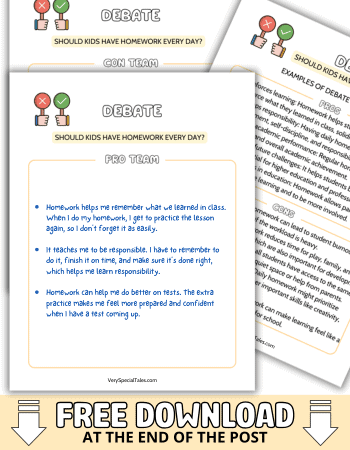
Debates are a fantastic way to encourage creative thinking and help kids understand different perspectives on real-world problems. By arguing for or against a topic, students learn to consider and respect diverse viewpoints, building skills in critical analysis and the curiosity and flexibility needed for problem-solving.
Divide students into groups, and randomly allocate the teams that will defend either position.
Here’s a list of five debate topics that would work well for a team pro/con structure:
- Should kids have homework every day?
- Would it be it better to have a longer summer break, or shorter school days year-round?
- Should schools ban junk food from the cafeteria?
- Is it better to learn from books or through technology?
- Should animals be kept in zoos?
- Should kids be allowed to have smartphones?
31. Classification Game
Present a set of mixed-up objects (e.g., animals, plants, objects) and ask children to categorize them into specific groups (e.g., mammals, plants, machines).
32. Predicting Changes in an Ecosystem
This activity involves analyzing data or observing patterns to make educated guesses about how an ecosystem might evolve under certain conditions. This can help students understand cause and effect within natural systems, fostering critical thinking about environmental science and ecology.
For example, create a small ecosystem using plants and animals (real or artificial) and ask children what would happen if a new element was introduced, such as removing one species or adding a new one. ed: suggest plants and insects. Creating an ecosystem with animals is a big ask!
33. Making Predictions from Data
Making Predictions from Data is a real-world activity that teaches students to analyze patterns and trends to make informed guesses about future outcomes. By examining data, whether from a simple weather chart or a survey on favorite foods, students learn to interpret information, identify trends, and develop critical thinking skills. This activity can be used in various subjects, helping students understand how data supports decision-making in everyday life.
For example, give students data on the number of books read by their classmates each month. They notice that book reading increased steadily from September to December. Based on this trend, ask them to predict how many books will be read in January and discuss possible reasons for the increase, like cooler weather or reading challenges.
34. Comparing and Contrasting Items
Comparing and Contrasting is a key critical thinking activity that helps students explore similarities and differences between topics, ideas, or items. This skill can be applied to anything from everyday choices to analyzing historical events, comparing characters in a story, or understanding scientific concepts. An effective activity is to have students compare items they might want to buy, like two different backpacks or tablets. By evaluating features, prices, and quality, they practice making informed decisions, building both analytical and decision-making skills.
35. Analyze a News Article
Provide a simple news article on current affairs and ask children to identify the key points of that particular situation, evaluate the reliability of the sources, and discuss what actions they might take if they were involved in the situation. This activity builds critical thinking by encouraging them to reflect on real-world events and consider different perspectives.
36. Make a Decision Matrix
A Decision Matrix is a tool that helps students evaluate multiple options by rating each one based on specific criteria. It’s a grid where options are listed on one side, criteria on the other, and each option is scored to find the best choice. This encourages critical thinking and teaches students to make thoughtful, balanced decisions by considering all aspects of a problem.
- Students are deciding on a class project, they can list options (like a science experiment, art display, or community service) and criteria (interest level, resources needed, time required) to help choose the best fit.
- Families choosing a pet may weigh options like size, cost, care requirements, and activity level.
Incorporating critical thinking activities in the classroom is a powerful way to nurture young minds. These exercises build essential cognitive skills and help kids become inquisitive, confident thinkers.
Other Cognitive Abilities Resources & Articles
- Fun Problem-Solving Workbook for Kids
- 25 Problem-Solving Activities for Kids
- 57 Memory Activities for Kids
- 30 Focus & Attention Activities for Kids
Critical Thinking Worksheets for Kids (PDF Download)
Your critical thinking worksheets include the following activities:
- Fun Shapes Sudoku
- Fact vs Opinion
- Debate Activity

Leave a Reply Cancel reply
Your email address will not be published. Required fields are marked *
🎒 Back-To-School Sale: 30% OFF + Get a Free Family Plan!

Critical Thinking Games & Activities for Kids
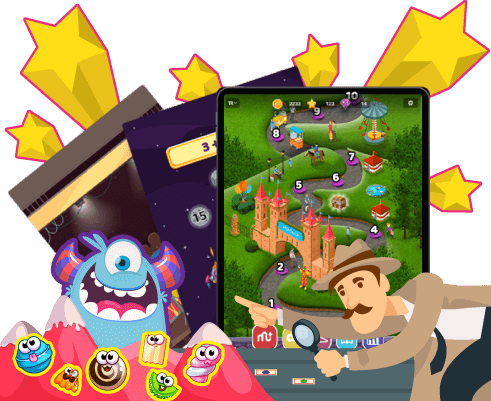
Critical thinking skills are essential to succeed in everyday life, and there are ways to enhance these abilities for children of all ages.
But what is critical thinking for kids? It means being open to new ideas, arguments, and information. Children with strong critical thinking skills are rational and look for alternative ways to solve problems.
We've collected together the best critical thinking games and critical thinking exercises for kids to make them become critical thinkers!
Online Critical Thinking Games
The most effective way to improve your children’s thinking skills is to engage them with educational games. Here are critical thinking games for kids to support their school success
Critical Thinking Game
This fun critical thinking game for kids is all about reasoning as fast and accurately as you can. Let’s try!
Puzzle Critical Thinking Game
It’s important to use your critical thinking skills even when you play with puzzles! Discover Tangram to develop it.
Math Critical Thinking Game
Critical thinking exercises and math can be the best friends! Here is a great critical thinking game with them.
Collaboration Game
Collaboration games are the best, and now it’s time to collaborate these numbers to find 10! Hurry, time is ticking!
Online Critical Thinking Game
Here is a fun critical thinking activity with candies! Attention and critical thinking skills make you eagle-eyed.
Basic Critical Thinking Game
In this critical thinking activity for kids, they need to select the image that is appropriate for the given condition.
Easy Critical Thinking Game
These fun critical thinking questions for kids are perfect for students in the early grades of school to sharpening their counting and math skills.
Cool Critical Thinking Game
It’s a critical thinking test for kids! Use your thinking skills to find out the correct answer!
MentalUP offers 150+ critical thinking games besides attention, concentration, logic, language, visual intelligence, and memory games ! 🚀✨
The best part of the multi-awarded app is all these gamified exercises are developed by pedagogues , academicians , and game designers . 🎓🙌
That’s why kids enjoy playing these games a lot; meanwhile, they boost their cognitive skills. 🤩
As parents, you can track your kids’ development with different report tools . These analyses are helpful to you in determining your kids’ strengths and the skills that need to be improved according to their peers ! 📊🎯
PLAY MENTALUP
Critical Thinking Activities for Kids
Now, let’s take a look at some fun activities that can help you encourage younger children to improve their critical skills! These exercises can help them to think critically whether they are at home, at school, or in online classes. Critical thinking in classroom can make them more successful even in their exams, such as the Kangaroo Math Competition .
1. Encourage Thinking

Children are full of questions, aren't they? So, to encourage their thinking process, you can ask them to try answering their questions or want them to answer would you rather questions for kids . And in the process, you can help them arrive at the answer using logical thinking instead of providing them with a direct answer.
It is possible to improve critical thinking skills even for preschoolers; one of the key elements of high-order thinking is making rational choices and justifying kids' own decisions.
Let's help your preschooler analyse the objects to make a logical decision themselves using critical thinking worksheets for preschoolers.
2. Play Sorting Games
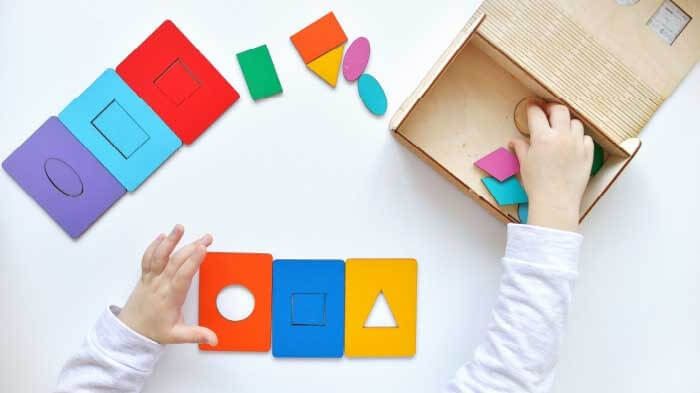
Critical skills include the reasoning ability to solve real-life problems. And, of course, one of the great ways to support children’s reasoning and classification skills is sorting games that also function as strategy games for kids .
This activity will help children see the differences among various groups and enhance their understanding of the objects.
To play, you can simply ask your children to sort the same kind of objects using different features like colors, shapes, or sizes. Or if you would like to have an online solution here it is: Educational Games for 4 Year Olds
3. Solve Brain Teasers Together
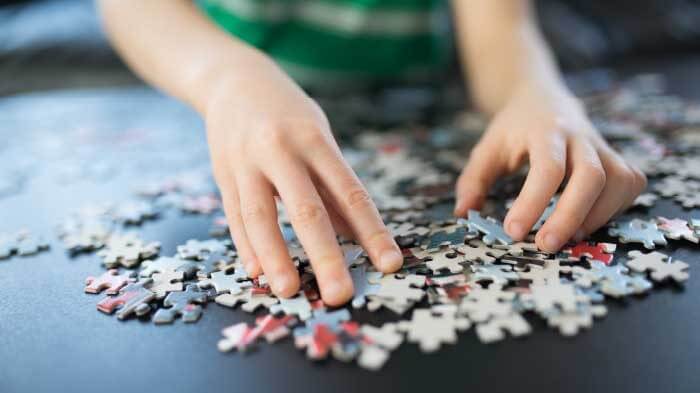
To trigger brain activity, you can always benefit from brain teasers. Solving any kind of brain teasers together will allow your children to learn from you and challenge their problem-solving skills at the same time.
Also, brain teasers are one of the greatest and fun critical thinking games for adults!
4. Ask Them Riddles
Riddles are also an excellent way to help your children become critical thinkers, not to mention how fun they actually are. Asking riddles as team building activities high school are great examples of critical thinking in the classroom!
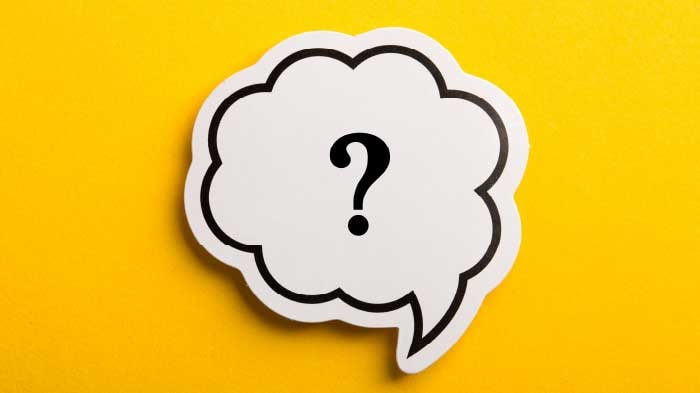
So, let your children promote their reasoning, problem-solving, and many other skills with a critical thinking activity as simple as riddles!
5. Create Games from Real-life Problems
Since critical skills are absolutely necessary for our daily lives, then why not apply them to some educational activities ?

You can take real-world problems like recycling or water scarcity as an open ended questions game and ask your children to think of solutions.
These kinds of pretend competition games for kids will not only boost their problem-solving skills as they focus on creative problems but also help them learn about their environment and develop their good sense.
Critical Thinking Questions and Answers for Kids
These fun critical thinking questions and answers are perfect for students in the early grades of school to sharpen their critical thinking, counting and math skills. It is also a very good alternative for kindergarten math games .
Critical Thinking Test for Kids
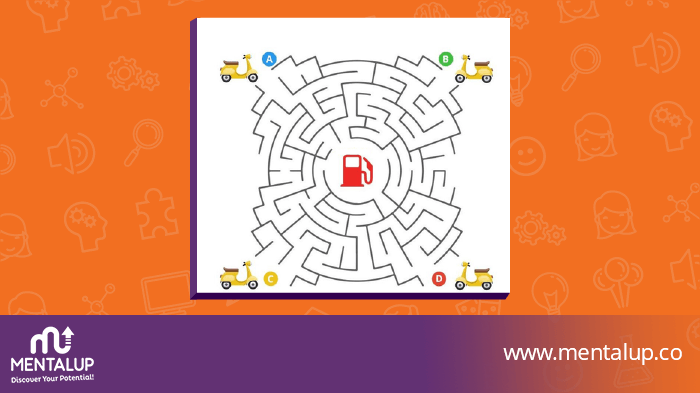
Bip bip! Can you tell which scooter will reach the gas station? 🛵
The answer is B!
If you follow the road path, you will see that only B can reach the gas station.
Want to solve more puzzles? Let’s try MentalUP Brain Teaser for Kids
Click to Try
Critical Thinking Example for Kids
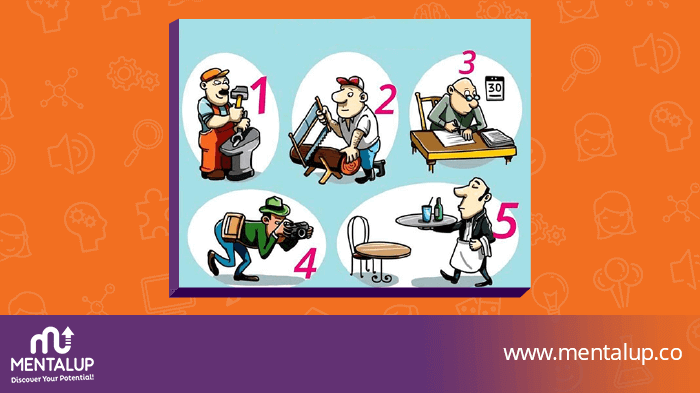
Can you guess who is left-handed and why? 🧐
It’s irregular to serve drinks with left hand for a right-handed person. So, the answer is 5.
You’re good at hard riddles! Let’s continue with MentalUP to see your detailed performance reports.
Critical Thinking Activity for Kids
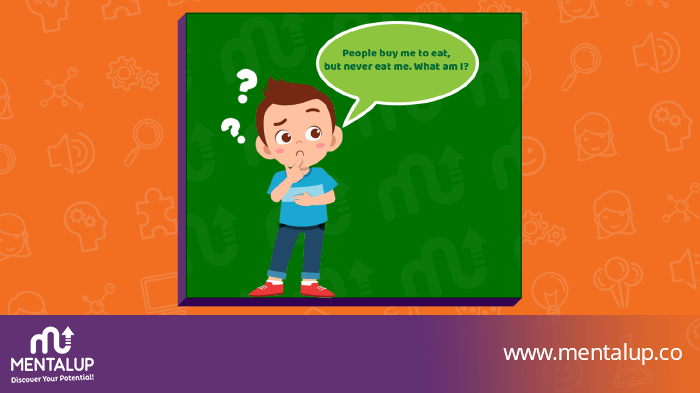
What am I? 😋
Tip: You’re using this magic word every day!
The answer is easy. It’s a plate!
Use the app for more questions and exercises.
Play for free
Critical Thinking for Kids
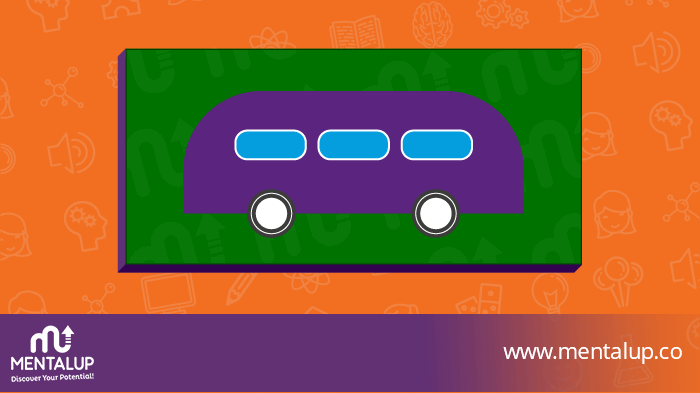
Which way is the bus going? 🚌
Here is a tip for you: This is a bus in the U.K
The bus is moving left.
Because we cannot see the door of the bus in this picture!
Couldn’t find the answer? You can always do brain exercises and improve your visual attention easily with MentalUP!
get Brain Teasers App!
Critical Thinking Question for Kids
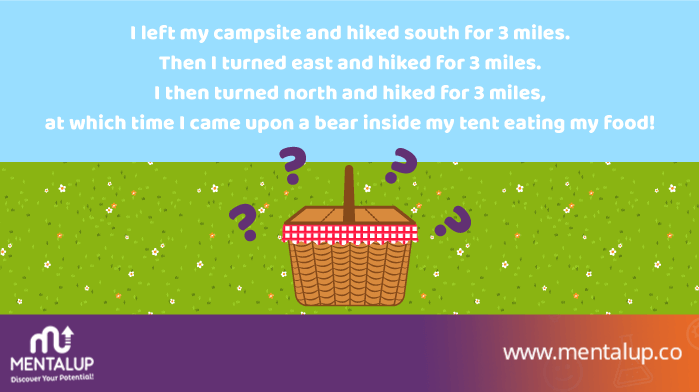
What colour was the bear?
The bear was white!
The only place you can hike 3 miles south, then east for 3 miles, then north for 3 miles and end up back at your starting point is the North Pole.
There are only polar bears in the North Pole, which are white.
Can’t find the answers? Do brain exercises and improve your problem-solving skill with MentalUP Brain Teasers App!
Get the app
Critical Thinking Game for Kids
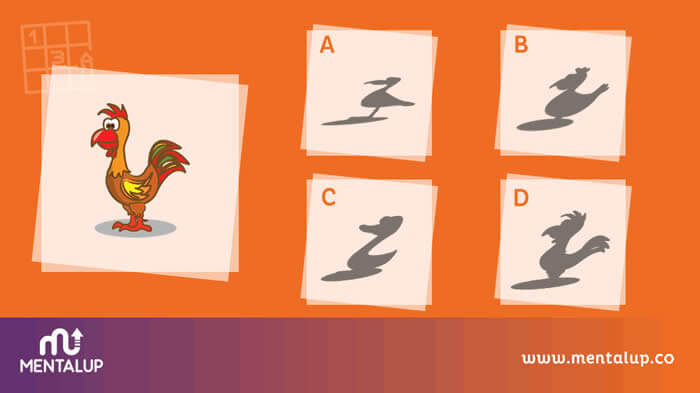
Which shadow corresponds to the image on the left? 🐓
The correct answer is D.
For more visual brain teasers for kids, download MentalUP and test your visual intelligence skills. You can see your detailed working reports and even compare your results with your peers!
Download MentalUP
FAQ About Critical Thinking For Kids
How to improve a child’s thinking skills.
The most effective way of improving a child’s thinking skills is to support them with educational games. If you are looking for the right games to develop critical skills, you can jump right into MentalUP games specifically designed for your children. Also, don’t forget that MentalUP provides kids with lots of different options such as Math Kangaroo problems , math riddles , and puzzles to empower their critical thinking abilities.
How to raise critical thinkers?
Whether you are a parent or a teacher, you can do activities with your children to help them become critical thinkers. Some of these activities include encouraging their thinking process, playing sorting games, solving brain teasers and riddles, and creating pretend games from real-world problems.
What are the 5 critical thinking skills?
Critical thinking skills are a combination of various abilities, including analysis, evaluation, explanation, problem-solving, and decision-making. There are more elements to be included, but most people accept that these are the 5 most important critical thinking skills.
At what age does critical thinking develop?
They start developing around the age of 2 since a two-year-old can communicate, recognize objects around them, and comprehend the differences between them.
Does critical thinking increase with age?
Critical abilities are related to one’s age and education. But it can be improved with practice at all ages. For example, the list we’ve created “ Best Apps for 11 Year Olds ” offers a huge help for that.
Is critical thinking taught in schools?
It is a part of most educational programs, such as solving math word problems requires critical thinking skills. However, critical thinking in school must be especially encouraged by teachers to help children develop and upgrade these skills. It is possible to improve it by using suitable back to school activities .
What activities improve critical thinking?
Playing critical thinking games for kids like MentalUP, doing puzzles, and solving riddles are the most important thinking activities.
Which game is the best for thinking?
It would be wrong to choose only one game to develop any skills. Instead of looking for the best game, playing beneficial critical thinking games for kids and adults would be more helpful. MentalUP offers 150+ critical thinking games, so the brain keeps being active with different kinds of games all the time.
Is Sudoku good for critical thinking?
Sudoku is suitable as a critical thinking game that both kids and adults enjoy to play. It stimulates other types of cognitive skills like attention and concentration too, so playing Sudoku is always a good choice.
MentalUP Educational Games are designed by academicians, game designers, and scientists to support the mental development process of your children. Because they are in the category of best safe kids games , you can be at ease! 🌈 You can benefit from MentalUP, which is among the best funny apps for kids to boost their skills. 💪
Try MentalUP

Problem Solving Techniques – Best Methods with Examples

How To Succeed in School

What Is Logical Thinking? 8 Tips to Improve Logic
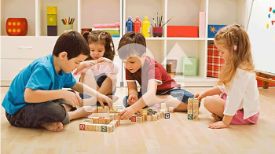
Left Brain and Right Brain Development: Activities & Exercises
Educationise
11 Activities That Promote Critical Thinking In The Class
Ignite your child’s curiosity with our exclusive “Learning Adventures Activity Workbook for Kids” a perfect blend of education and adventure!
Critical thinking activities encourage individuals to analyze, evaluate, and synthesize information to develop informed opinions and make reasoned decisions. Engaging in such exercises cultivates intellectual agility, fostering a deeper understanding of complex issues and honing problem-solving skills for navigating an increasingly intricate world.
Through critical thinking, individuals empower themselves to challenge assumptions, uncover biases, and constructively contribute to discourse, thereby enriching both personal growth and societal progress.
Critical thinking serves as the cornerstone of effective problem-solving, enabling individuals to dissect challenges, explore diverse perspectives, and devise innovative solutions grounded in logic and evidence. For engaging problem solving activities, read our article problem solving activities that enhance student’s interest.
52 Critical Thinking Flashcards for Problem Solving
What is Critical Thinking?
Critical thinking is a 21st-century skill that enables a person to think rationally and logically in order to reach a plausible conclusion. A critical thinker assesses facts and figures and data objectively and determines what to believe and what not to believe. Critical thinking skills empower a person to decipher complex problems and make impartial and better decisions based on effective information.
More Articles from Educationise
- 10 Innovative Strategies for Promoting Critical Thinking in the Classroom
- 9 Must-Have AI Tools for Teachers to Create Interactive Learning Materials
- The Future of Education: 8 Predictions for the Next Decade
- The Latest in EdTech: 5 Innovative Tools and Technologies for the Classroom
- 8 Free Math Problem Solving Websites and Applications
Importance of Acquiring Critical Thinking Skills
Critical thinking skills cultivate habits of mind such as strategic thinking, skepticism, discerning fallacy from the facts, asking good questions and probing deep into the issues to find the truth. Acquiring critical thinking skills was never as valuable as it is today because of the prevalence of the modern knowledge economy.
Today, information and technology are the driving forces behind the global economy. To keep pace with ever-changing technology and new inventions, one has to be flexible enough to embrace changes swiftly.
Today critical thinking skills are one of the most sought-after skills by the companies. In fact, critical thinking skills are paramount not only for active learning and academic achievement but also for the professional career of the students.
The lack of critical thinking skills catalyzes memorization of the topics without a deeper insight, egocentrism, closed-mindedness, reduced student interest in the classroom and not being able to make timely and better decisions.
Incorporating critical thinking lessons into the curriculum equips students with the tools they need to navigate the complexities of the modern world, fostering a mindset that is adaptable, inquisitive, and capable of discerning truth from misinformation.
Benefits of Critical Thinking for Students
Certain strategies are more eloquent than others in teaching students how to think critically. Encouraging critical thinking in the classroom is indispensable for the learning and growth of the students. In this way, we can raise a generation of innovators and thinkers rather than followers. Some of the benefits offered by thinking critically in the classroom are given below:
- It allows a student to decipher problems and think through the situations in a disciplined and systematic manner
- Through a critical thinking ability, a student can comprehend the logical correlation between distinct ideas
- The student is able to rethink and re-justify his beliefs and ideas based on facts and figures
- Critical thinking skills make the students curious about things around them
- A student who is a critical thinker is creative and always strives to come up with out of the box solutions to intricate problems
- Critical thinking skills assist in the enhanced student learning experience in the classroom and prepares the students for lifelong learning and success
- The critical thinking process is the foundation of new discoveries and inventions in the world of science and technology
- The ability to think critically allows the students to think intellectually and enhances their presentation skills, hence they can convey their ideas and thoughts in a logical and convincing manner
- Critical thinking skills make students a terrific communicator because they have logical reasons behind their ideas
Critical Thinking Lessons and Activities
11 Activities that Promote Critical Thinking in the Class
We have compiled a list of 11 critical thinking activities for students that will facilitate you to promote critical thinking abilities in the students. By incorporating these activities, educators can introduce real-world examples of critical thinking in the classroom, empowering students to apply these skills in everyday situations.
We have also covered problem solving activities that enhance student’s interest in our another article. Click here to read it.
1. Worst Case Scenario
Divide students into teams and introduce each team with a hypothetical challenging scenario. Allocate minimum resources and time to each team and ask them to reach a viable conclusion using those resources.
The scenarios can include situations like stranded on an island or stuck in a forest. Students will come up with creative solutions to come out from the imaginary problematic situation they are encountering. Besides encouraging students to think critically, this activity will enhance teamwork, communication and problem-solving skills of the students.
This critical thinking activity not only pushes students to devise innovative solutions in challenging scenarios but also strengthens their teamwork, communication, and problem-solving abilities, making it an engaging and educational experience.
Read our article: 10 Innovative Strategies for Promoting Critical Thinking in the Classroom
2. If You Build It
It is a very flexible game that allows students to think creatively. To start this activity, divide students into groups. Give each group a limited amount of resources such as pipe cleaners, blocks, and marshmallows etc.
Every group is supposed to use these resources and construct a certain item such as building, tower or a bridge in a limited time. You can use a variety of materials in the classroom to challenge the students. This activity is helpful in promoting teamwork and creative skills among the students.
Incorporating critical thinking games like this into your classroom not only promotes teamwork and creativity but also challenges students to think outside the box as they work together to build their structures.
It is also one of the classics which can be used in the classroom to encourage critical thinking. Print pictures of objects, animals or concepts and start by telling a unique story about the printed picture. The next student is supposed to continue the story and pass the picture to the other student and so on.
This engaging exercise is one of the most effective critical thinking activities for kids, as it encourages them to use their creativity and problem-solving skills while working together to construct innovative structures with limited resources.
4. Keeping it Real
In this activity, you can ask students to identify a real-world problem in their schools, community or city. After the problem is recognized, students should work in teams to come up with the best possible outcome of that problem.
5. Save the Egg
Make groups of three or four in the class. Ask them to drop an egg from a certain height and think of creative ideas to save the egg from breaking. Students can come up with diverse ideas to conserve the egg like a soft-landing material or any other device. Remember that this activity can get chaotic, so select the area in the school that can be cleaned easily afterward and where there are no chances of damaging the school property.
6. Start a Debate
In this activity, the teacher can act as a facilitator and spark an interesting conversation in the class on any given topic. Give a small introductory speech on an open-ended topic. The topic can be related to current affairs, technological development or a new discovery in the field of science. Encourage students to participate in the debate by expressing their views and ideas on the topic. Conclude the debate with a viable solution or fresh ideas generated during the activity through brainstorming.
7. Create and Invent
This project-based learning activity is best for teaching in the engineering class. Divide students into groups. Present a problem to the students and ask them to build a model or simulate a product using computer animations or graphics that will solve the problem. After students are done with building models, each group is supposed to explain their proposed product to the rest of the class. The primary objective of this activity is to promote creative thinking and problem-solving skills among the students.
8. Select from Alternatives
This activity can be used in computer science, engineering or any of the STEM (Science, Technology, Engineering, Mathematics) classes. Introduce a variety of alternatives such as different formulas for solving the same problem, different computer codes, product designs or distinct explanations of the same topic.
Form groups in the class and ask them to select the best alternative. Each group will then explain its chosen alternative to the rest of the class with reasonable justification of its preference. During the process, the rest of the class can participate by asking questions from the group. This activity is very helpful in nurturing logical thinking and analytical skills among the students.
9. Reading and Critiquing
Present an article from a journal related to any topic that you are teaching. Ask the students to read the article critically and evaluate strengths and weaknesses in the article. Students can write about what they think about the article, any misleading statement or biases of the author and critique it by using their own judgments.
In this way, students can challenge the fallacies and rationality of judgments in the article. Hence, they can use their own thinking to come up with novel ideas pertaining to the topic.
10. Think Pair Share
In this activity, students will come up with their own questions. Make pairs or groups in the class and ask the students to discuss the questions together. The activity will be useful if the teacher gives students a topic on which the question should be based.
For example, if the teacher is teaching biology, the questions of the students can be based on reverse osmosis, human heart, respiratory system and so on. This activity drives student engagement and supports higher-order thinking skills among students.
11. Big Paper – Silent Conversation
Silence is a great way to slow down thinking and promote deep reflection on any subject. Present a driving question to the students and divide them into groups. The students will discuss the question with their teammates and brainstorm their ideas on a big paper.
After reflection and discussion, students can write their findings in silence. This is a great learning activity for students who are introverts and love to ruminate silently rather than thinking aloud.
Incorporating critical thinking activities for high school students, like silent reflection and group brainstorming, encourages deep thought and collaboration, making it an effective strategy for engaging both introverted and extroverted learners.
Finally, for students with critical thinking, you can go to GS-JJ.co m to customize exclusive rewards, which not only enlivens the classroom, but also promotes the development and training of students for critical thinking.
Share this:
Discover more from educationise.
Subscribe to get the latest posts sent to your email.
Type your email…
4 thoughts on “ 11 Activities That Promote Critical Thinking In The Class ”
- Pingback: What is Growth Mindset? 50+ Motivational Quotes on Growth Mindset - Educationise
- Pingback: 6 Steps To Implement Project-Based Learning In The Classroom - Educationise
- Pingback: Engaging Problem-Solving Activities That Spark Student Interest - Educationise
Thanks for the great article! Especially with the post-pandemic learning gap, these critical thinking skills are essential! It’s also important to teach them a growth mindset. If you are interested in that, please check out The Teachers’ Blog!
Leave a Reply Cancel reply
Subscribe now to keep reading and get access to the full archive.
Continue reading
- Parenting Tips
- Products We Love
- Kids Activities
- Celebrating Her

23 Activities to Develop Critical Thinking Skills in Children
Are you looking for ways to help your child become a better problem solver and decision maker?
Do you want to prepare them for success in the 21st century, where critical thinking skills are highly valued?
Look no further, because in this post we will share 23 engaging activities that can help your child develop critical thinking skills. From puzzles and games to real-life scenarios and creative challenges, these activities will not only enhance your child’s thinking abilities but also keep them entertained and curious. As a parent, it is important to give your child the tools they need to succeed, and critical thinking skills are a vital part of that toolkit.
So, let’s dive in and discover some fun and effective ways to help your child develop critical thinking skills!
Table of Contents
What is critical thinking skills?
Critical thinking is a cognitive process that involves analyzing, evaluating, and synthesizing information to make informed decisions and solve problems effectively. It involves the ability to question assumptions, examine evidence, and consider multiple perspectives to arrive at logical and evidence-based conclusions.
For example, when playing a game of chess, a player must analyze the board, anticipate their opponent’s moves, and make strategic decisions based on the available information. Similarly, when conducting research, an individual must evaluate the credibility and reliability of sources and synthesize information to form a coherent argument.
Importance of developing critical thinking skills in children
Developing critical thinking skills in children is crucial for their overall cognitive and social-emotional development. Research has shown that children who possess strong critical thinking skills are better equipped to make sound decisions, solve complex problems, and communicate effectively with others.
One study conducted by the University of California, Los Angeles found that students who received training in critical thinking showed significant improvements in their reading and writing abilities. These students also demonstrated higher levels of creativity and were better able to understand and analyze complex issues.
In addition, developing critical thinking skills can help children become more independent and confident in their decision-making abilities. They learn to evaluate information and evidence, identify biases, and consider different perspectives before making a decision. This can lead to a greater sense of self-awareness and a better understanding of their own strengths and weaknesses.
Furthermore, critical thinking skills are essential in today’s rapidly changing world. As technology continues to advance and the job market evolves, individuals who possess strong critical thinking skills are more likely to succeed. They are better equipped to adapt to new challenges and to identify new opportunities.
Overall, the development of critical thinking skills is essential for children’s long-term success and well-being. By providing them with opportunities to practice critical thinking skills through various activities and experiences, parents and educators can help children become effective problem solvers, communicators, and decision-makers.
Recommended reading: How To Teach Your Child To Think Out Of The Box
Recommended reading: 9 Fun Activities to Build Listening Skills in Children
View this post on Instagram A post shared by Raising Children 101 (@raising_children_101)

Activities to develop critical thinking skills in children
Critical thinking skills can be developed through various activities that require individuals to analyze and evaluate information, develop hypotheses, and test their ideas using evidence.
- Read Books Together: Reading books with children helps to develop their critical thinking skills. Encourage them to ask questions about the story, analyze the characters’ actions, and make predictions about the outcome.
- Board Games: Board games are a fun way to develop critical thinking skills in children. Games such as chess, checkers, and monopoly require children to think strategically and make decisions based on the outcome of their moves. Playing board games also encourages children to think creatively and come up with unique solutions to problems.
- Encourage Questions: Encourage children to ask questions about the world around them. This can help them to develop their analytical skills and learn how to evaluate information.
- Play “What If” Games: “What If” games encourage children to think creatively and critically. For example, ask them what they would do if they were stranded on a deserted island or if they could travel through time.
- Brainstorm Solutions: Encourage children to brainstorm solutions to problems they encounter. This can help them develop their problem-solving skills and learn how to think critically.
- Mind Mapping: Mind mapping is a great activity to improve critical thinking skills in children. It helps children to organize their ideas and think creatively. Give your child a topic and ask them to create a mind map by writing down all their thoughts and ideas related to the topic. This activity can help your child to improve their brainstorming skills and connect different ideas.
- Play Sudoku: Sudoku is a logic-based game that requires critical thinking skills. It requires children to think logically and use deductive reasoning to solve a problem. Sudoku puzzles can be found in many newspapers and online.
- Conduct Research: Encourage children to conduct research on a topic that interests them. This can help them develop their analytical skills and learn how to evaluate information.
- Watch Documentaries: Documentaries are a great way to develop critical thinking skills in children. Encourage them to ask questions about the information presented and analyze the content.
- Play “What’s Missing”: “What’s Missing” is a memory game that requires children to think critically and remember information. For example, lay out several objects and ask them to identify which one is missing.
- Play “I Spy”: “I Spy” is a game that requires children to think critically and observe their surroundings. It can help develop their analytical and problem-solving skills.
- Play Charades: Charades is a game that requires children to think creatively and critically. It helps develop their problem-solving and analytical skills.
- Play “20 Questions”: “20 Questions” is a game that requires children to ask questions and think critically. It can help them develop their analytical and problem-solving skills.
- Play “Would You Rather”: “Would You Rather” is a game that encourages children to think critically and make informed decisions. It helps them develop their problem-solving skills.
- Play “Spot the Differences”: “Spot the Differences” is a game that requires children to think critically and observe their surroundings. It helps develop their analytical skills.
- Play “Who Am I”: “Who Am I” is a game that requires children to think critically and ask questions. It helps develop their analytical and problem-solving skills.
- Write Stories: Encourage children to write stories that require critical thinking skills. For example, they could be asked to create a story that involves problem-solving, decision-making, or predicting an outcome. This activity encourages children to think creatively and come up with unique solutions to problems, helping them develop their critical thinking skills.
- Science Experiments: Science experiments are a fun way to develop critical thinking skills in children by encouraging them to ask questions, analyze data, and draw conclusions.. Encourage children to think about the scientific method and predict what will happen during an experiment. This encourages children to think about cause and effect and develops their critical thinking skills.
- Mystery Box: A mystery box is a great way to develop critical thinking skills in children. Place a number of items in a box and ask children to guess what the items are based on their shape, texture, and weight. This activity encourages children to think creatively and use deductive reasoning to solve a problem.
- Coding: Coding is a great way to develop critical thinking skills in children. It requires children to think logically and use deductive reasoning to solve problems. There are many online resources available that teach children how to code.
- Debate: Debating is a great way to develop critical thinking skills in children. It requires children to think critically and come up with logical arguments to support their position. Debating also helps children develop their communication skills and learn how to express their thoughts and opinions effectively.
- Brain Teasers: Brain teasers are a fun way to develop critical thinking skills in children. They require children to think creatively and use deductive reasoning to solve problems. Brain teasers can be found in many puzzle books and online.
- Puzzles: Puzzles are an excellent way to enhance critical thinking skills in children. Give your child puzzles that require them to use their logical reasoning, problem-solving, and spatial reasoning skills. Puzzles can be in the form of jigsaw puzzles, crossword puzzles, or any other puzzle that requires critical thinking.
By incorporating these activities into your child’s daily routine, you can help them to develop critical thinking skills that will benefit them throughout their lives. These activities can be a fun and engaging way for children to learn and develop their cognitive skills.
- Development
LEAVE A REPLY Cancel reply
Save my name, email, and website in this browser for the next time I comment.
Subscribe Today
Trusted parenting advice for all ages The movement for children’s mental health Supportive environment for mothers for a holistic living Celebrating moms
Join the newsletter to experience a sense of tribe and read stories full of inspiration and drive!
Parenting the Strong-Willed: Strategies for Raising a Stubborn Child
Money matters: tips for teaching kids financial responsibility, should parents reward good grades.

Latest Posts
5 ways to say no to your child without actually saying no, how to find balance in your life as a working mom, when does gentle parenting go too far, related posts, teach your child how to deal with disappointments, 10 reasons why your child should enroll in cooking classes, does stress and pressure toughen your child, helping your perfectionist child: strategies for parents.

raising_children_101
Raising Children 101 is all about helping parents create beautiful memories for their children by understanding them better.
Popular Posts
Top 5 toys for babies (0 to 6 months), the problem with forcing your child to say “thank you”, 5 ways to deal with judgmental people, popular categories.
- Parenting 338
- Parenting Tips 301
- Well-being 62
- Products We Love 57
- Self Care 54
- Education 37
- Kids Activities 19
Stay connected
- Write For Us
- Terms and conditions
- Privacy Policy
- Returns and Refunds
©raisingchildren101.com. All rights reserved
- Math for Kids
- Parenting Resources
- ELA for Kids
- Teaching Resources

1. Online Decision Making Games
3. connect four, 5. ticket to ride: first journey, 6. catan junior, 9. battleship, 10. guess who.
Making decisions is a big part of growing up. Learning to make good decisions early on is super important for kids. It helps them become more independent, confident, and ready to face the world. That’s where decision making games for kids come into play. These games teach kids how to think ahead, make choices, and understand what happens because of those choices—all while having a blast!
Math & ELA | PreK To Grade 5
Kids see fun ., you see real learning outcomes ..
Watch your kids fall in love with math & reading through our scientifically designed curriculum.

In this blog, we’re going to dive into some fantastic games that do just that. From classic board games that have been around for years to new card games that will soon become favorites, we’ve got a list that will help any kid become a decision-making champ.
Best for Which Ages: 3 years and up
Decision making games online are one of the best choice making activities for kids to sharpen their critical thinking, problem-solving, and strategic planning skills in a fun, interactive environment. Engaging with these games teaches children to make quick decisions, analyze outcomes, and adapt their strategies in real time. Here’s a look at some engaging online decision making games that are perfect for young minds:
- Challenge Two of a Kind Game

Explore More

This game tests memory and attention to detail as players flip cards to find matching pairs. It’s about remembering what you saw and making strategic decisions on which cards to flip next. Perfect for developing concentration and memory recall, it’s a hit among kids looking to challenge their minds.
- Play Jumble Mania Game

Jumble Mania sharpens spelling and vocabulary by challenging players to rearrange jumbled letters to form words. This game enhances decision making by requiring players to choose the most logical order of letters, improving their language skills and quick thinking in a fun, engaging way.
- Challenge Match-Up Puzzles Game

Match-up puzzles take the challenge up by mixing memory skills with problem-solving. Players must match related items, not just identical ones, adding an extra layer of decision making. This game is excellent for kids who enjoy puzzles and are ready to think outside the box.
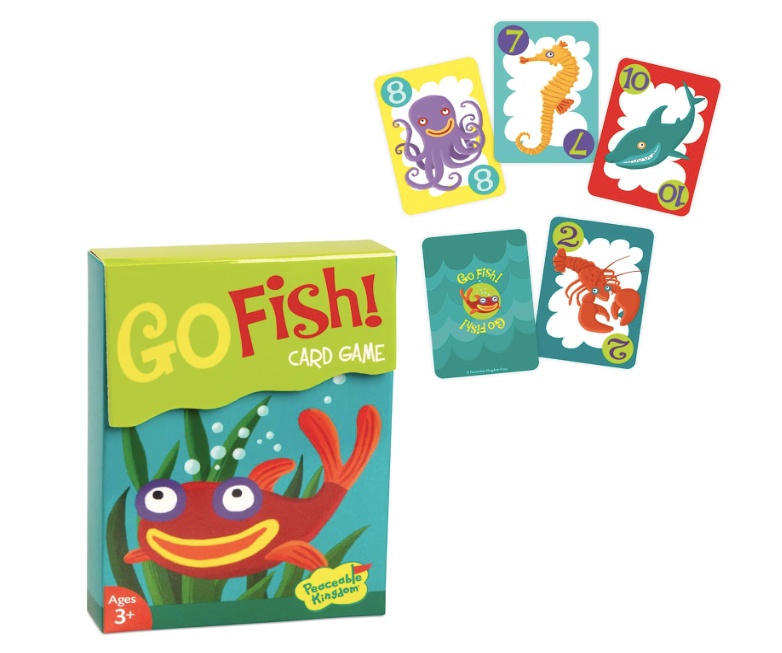
Best for Which Age: 3 years and up
Go Fish is a card game that sharpens memory and introduces kids to strategic thinking. Players ask each other for cards to make sets, using strategy to remember who holds which cards.
How to Play:
- Deal five cards to each player and place the rest in a “fish pond” in the center.
- Players ask others for specific cards to make sets of four.
- If the player has the card, they must hand it over; if not, they say “Go Fish,” and the asking player draws from the pond.
- The game ends when all sets are made, and the player with the most sets wins.
Buy here: Amazon
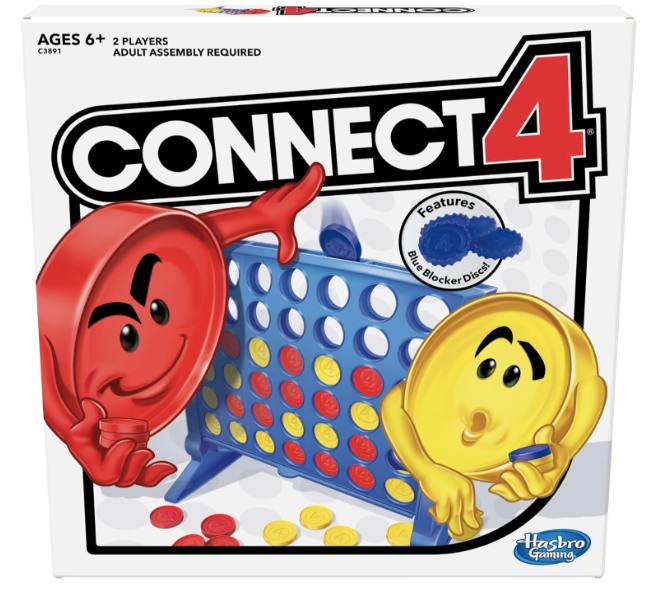
Best for Which Age: 6 years and up
Connect Four is all about strategic planning. Players aim to line up four discs in a row. This game challenges kids to think ahead and block their opponents, making it one of the most fun choice games for kids.
- Players choose a color and take turns dropping their colored discs into a vertically standing grid.
- The objective is to be the first to form a horizontal, vertical, or diagonal line of four of one’s discs.
- Players must strategize to block their opponent’s moves while working towards their four-in-a-row.
- The game ends when one player achieves a Connect Four or the grid fills up, indicating a tie.
Price: $12.51
Buy Here: Amazon
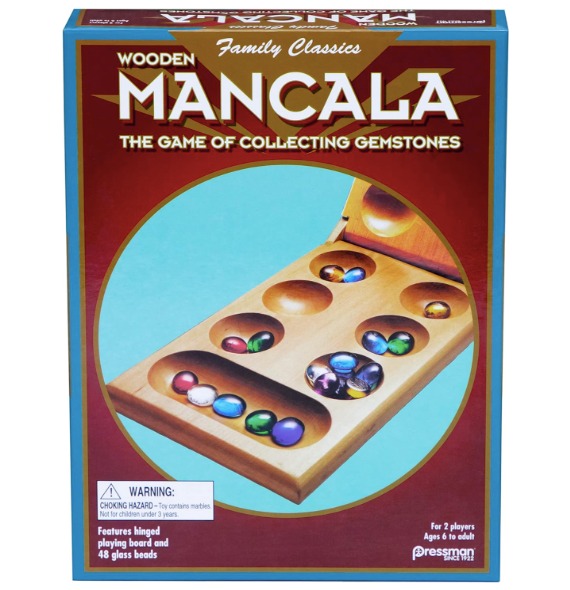
Mancala is a classic game that requires players to strategically move pieces around the board to capture more stones than their opponent. It’s a brilliant choice among decision making games for kids, teaching them to plan ahead and predict their opponent’s moves.
- The board is set up with an equal number of pieces in small pits.
- Players take turns picking up all the pieces in one of their pits and distributing them one by one in subsequent pits.
- The goal is to capture more pieces than the opponent by strategic placement and captures.
Price: $12
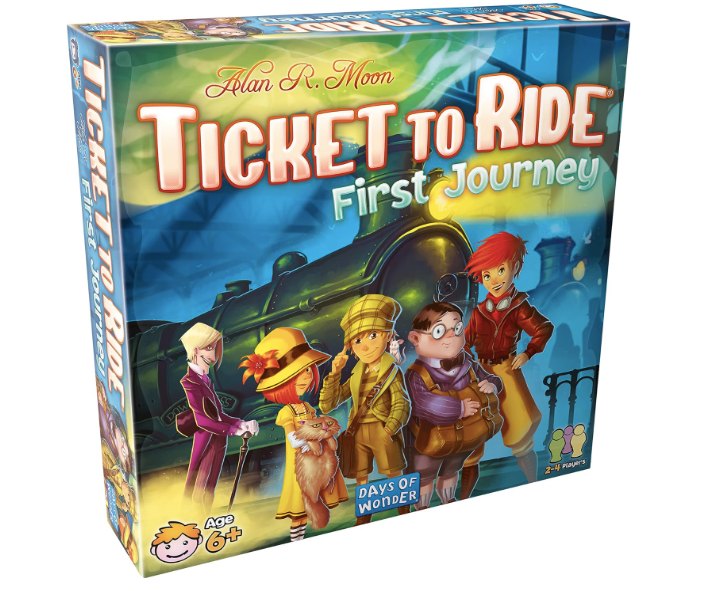
Ticket to Ride: First Journey simplifies the classic game for younger audiences, focusing on strategic thinking as players plan train routes across a map. This making choices game is perfect for introducing basic strategy and planning skills to kids.
- Players collect train cards that enable them to claim railway routes on a map.
- The aim is to connect distant cities through a network of trains.
- Strategic planning is required to block opponents and efficiently connect cities.
Price: $27
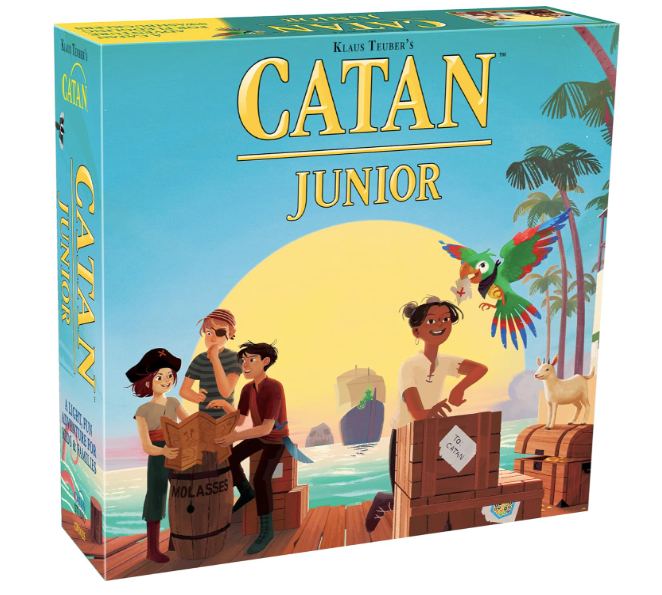
Catan Junior takes the beloved strategy game and simplifies it for younger players, focusing on resource management and basic strategic planning. It’s an excellent choice among decision making activities for elementary students, teaching them the importance of resource allocation and strategy.
- Players collect resources like wood and gold to build their pirate lairs.
- Trading resources with other players is a key part of the game.
- The first player to build all their pirate lairs wins, requiring careful planning and resource management.
Price: $24.99

Best for Which Age: 7 years and up
Uno is a popular card game that combines strategy with luck, requiring players to adapt their strategies based on the cards they have and the actions of their opponents. It’s one of the most fun and engaging decision making activities for children, teaching them adaptability and strategic thinking.
- Players aim to match a card in their hand with the current card shown on top of the deck either by color or number.
- Special action cards, like skips and reverses, add complexity.
- The first player to rid themselves of all their cards wins, requiring strategic decision-making and adaptability to changing game dynamics.
Price: $11.16

Chess is one of the best decision making games, teaching players to think several moves ahead and consider the consequences of their actions. It’s a classic game of strategy and tactics where every move counts.
- Each player starts with 16 pieces that move in specific ways across the board.
- The objective is to checkmate the opponent’s king, meaning the king is in a position to be captured and cannot escape.
- Players must protect their own pieces while strategizing to capture their opponent’s king.
Price: $14.99
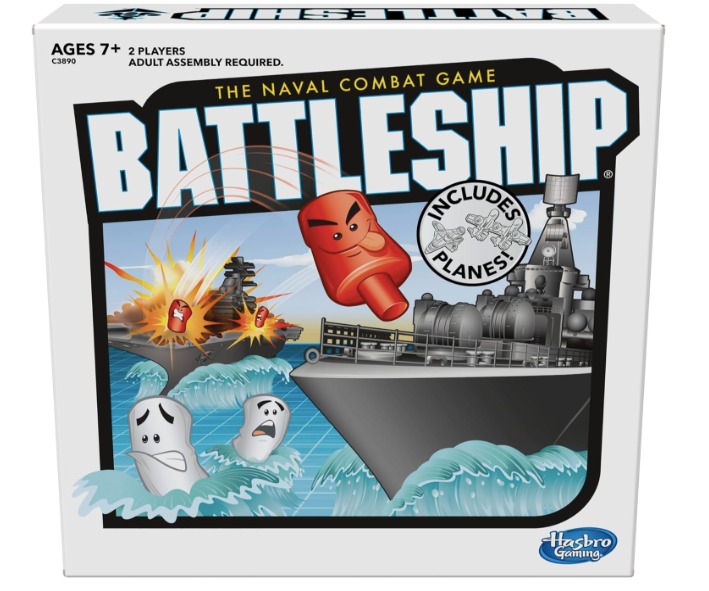
Battleship is a game that combines strategic planning and deduction, making it a great choice among decision making board games. Players guess the locations of their opponent’s ships and aim to sink them, all based on logical deduction and strategic thinking.
- Each player places their ships secretly on a grid.
- Players take turns calling out grid coordinates to guess the location of the opponent’s ships.
- The first player to sink all of the opponent’s ships wins.
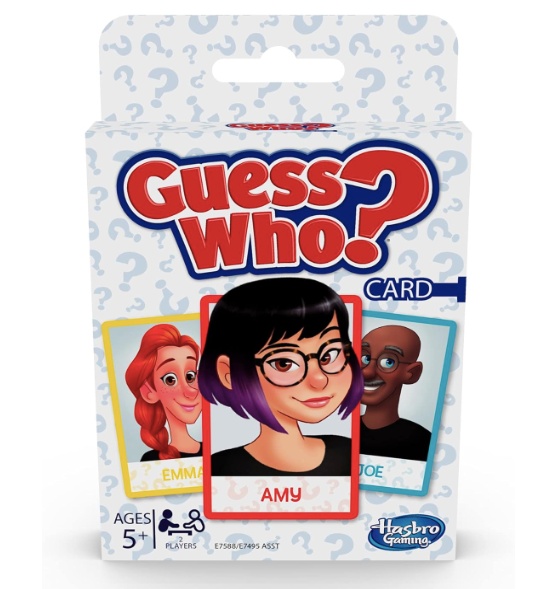
Best for Which Age: 5 years and up
Guess Who? is a fun decision making situations game that enhances logical thinking and decision-making. Players ask yes or no questions to deduce the identity of the opponent’s character, using logic and deduction at every turn.
- Each player chooses a character card and places it in front of them.
- Players take turns asking yes or no questions to narrow down the possible characters their opponent has chosen.
- The first player to correctly guess the opponent’s character wins.
Price: $5
11. Clue (Cluedo)
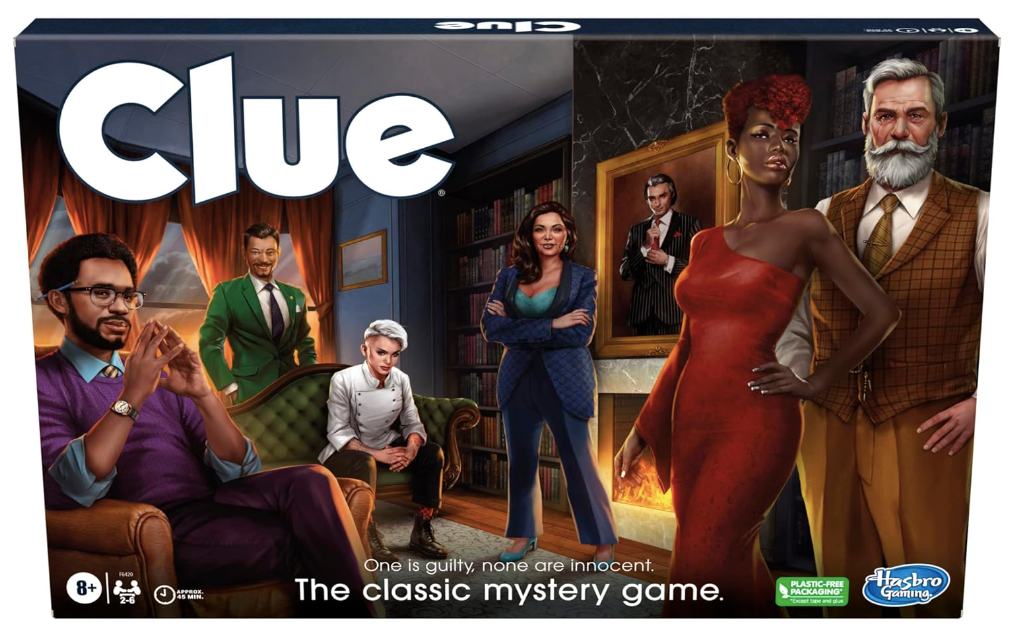
Best for Which Age: 8 years and up
Clue, or Cluedo, is a classic among group decision making games, where players solve a mystery by deducing who committed the crime, with what weapon, and in which room. It’s a fantastic game for developing deductive reasoning and decision-making skills.
- Players move around the game board, which represents the rooms of a mansion, to collect clues.
- Through a process of elimination and deduction based on the clues gathered, players try to solve the mystery.
- The first player to correctly accuse the murderer, the weapon, and the room wins the game.
Price: $17.99
12. Tic-Tac-Toe (Noughts and Crosses)
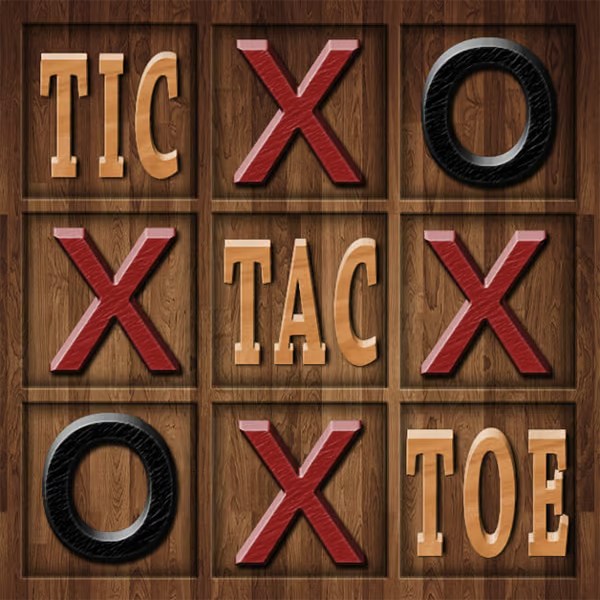
Tic-Tac-Toe, also known as Noughts and Crosses, is a perfect introductory decision making game for kids. It teaches young children the basics of strategy and foresight by encouraging them to think about their moves and anticipate their opponent’s next step.
- Players take turns marking a space in a 3×3 grid with their symbol, either a nought or a cross.
- The aim is to be the first to get three of your symbols in a row, either horizontally, vertically, or diagonally.
- Players need to block their opponent’s moves while working towards their own line of three.
13. Checkers (Draughts)
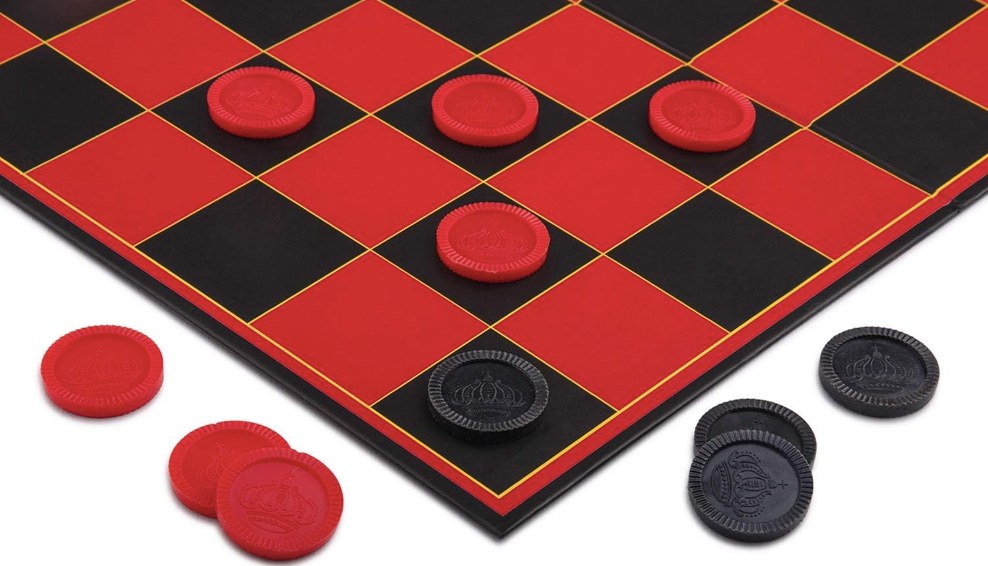
Checkers, known as Draughts in some countries, simplifies strategy and decision-making, making it one of the easiest decision making games for kids. It teaches them to plan their moves and predict their opponent’s actions in a straightforward, engaging way.
- Players move their pieces diagonally across a checkerboard, with the aim of capturing the opponent’s pieces by jumping over them.
- The game encourages players to protect their own pieces while finding opportunities to capture their opponent’s.
- The player who captures all of the opponent’s pieces wins.
Price: $15.99
14. Rat-a-Tat Cat
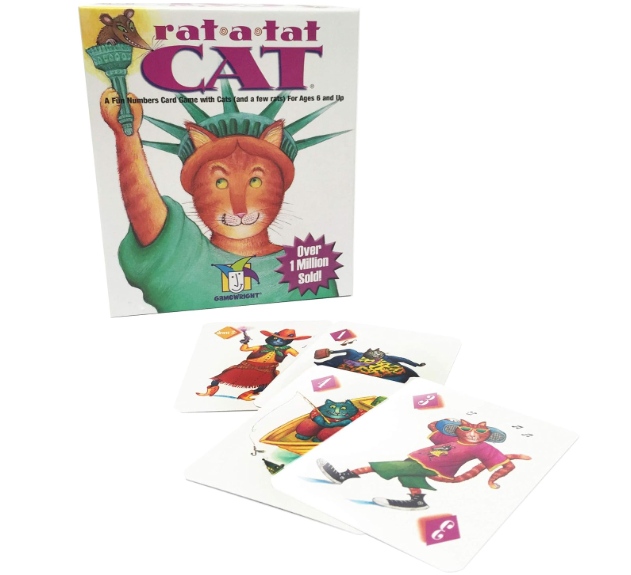
Rat-a-Tat Cat is a card game that boosts memory and strategy through the use of card swaps and peeks. It’s a fun and engaging way to enhance decision-making skills in kids, as they must remember the cards’ values and decide the best times to swap.
- Players are dealt cards that they can peek at but then must keep face down, trying to remember the values.
- The aim is to end up with the lowest score by swapping out high-value cards for lower ones.
- Strategic thinking is required to decide when to swap cards and when to stick with what you have.
Price: $11.99
15. Magic Memo Game
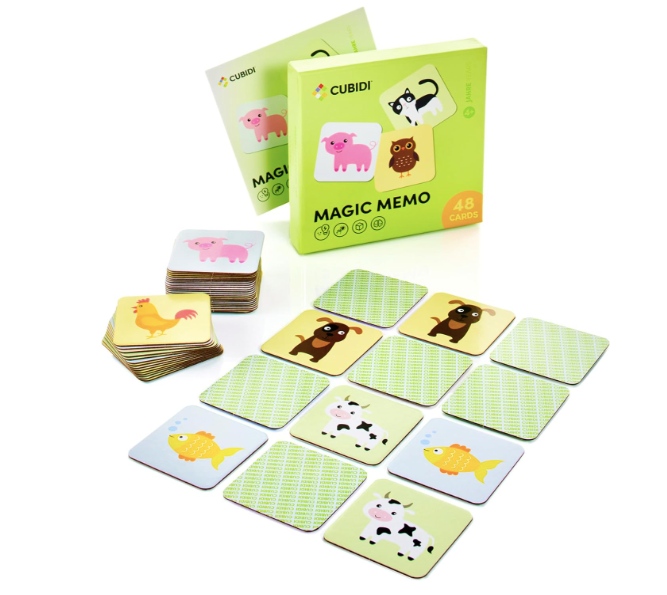
The Memory Game, also known as Concentration, is a fantastic choice for kids to boost their memory and focus. By matching pairs of cards, children practice attention to detail and improve their recall abilities, making it a great pick from games on decision making.
- Spread all cards face down on a table.
- Players take turns flipping over two cards at a time.
- If the cards match, they keep them and go again.
- If they don’t match, they turn them back over, and the next player goes.
- The game continues until all pairs are matched.
Price: $9.99
Decision making games for kids offer fun and interactive ways to boost critical thinking and problem-solving skills. These games not only keep children engaged but also play a crucial role in their cognitive development. So, let’s encourage our kids to play more of these games and watch them grow smarter every day!
Frequently Asked Questions (FAQs)
How do you teach children decision-making.
Teaching children decision-making involves guiding them through the process of making choices, discussing possible outcomes, and allowing them to experience the consequences in a safe environment. Encouraging them to weigh options and think ahead helps build this skill.
What is a decision-making game?
Decision making games for kids are an interactive activities designed to simulate scenarios where players must make choices, often within a set of rules or constraints, to achieve a goal or solve a problem, thereby sharpening their decision-making skills.
What is decision-making icebreaker activity?
A decision-making icebreaker activity is a short, engaging task that encourages participants to make choices and share their reasoning. It’s often used to warm up a group, foster teamwork, and introduce the concept of decision-making in a fun way.
What are some fun decision-making questions?
Fun decision-making questions can range from hypothetical scenarios like “Would you rather have the ability to fly or be invisible?” to practical choices such as “If you could only eat one food for the rest of your life, what would it be?” These fun would you rather questions stimulate thinking and conversation.
10 Best Educational Classroom Games for Kids in 2024
20 Best Board Games for Preschoolers in 2024
12 Best Indoor Recess Games For Kids
- Pre-Kindergarten
- Kindergarten
Most Popular

76 Best Report Card Comments Samples for Teachers

117 Best Riddles for Kids (With Answers)

40 Best Good Vibes Quotes to Brighten Your Day
Recent posts.
![100 True or False Questions for Kids [With Answers] True or false for kids](https://www.splashlearn.com/blog/wp-content/uploads/2024/10/true-or-false-for-kids-100x70.jpg)
Math & ELA | PreK To Grade 5
Kids see fun., you see real learning outcomes..
Watch your kids fall in love with math & reading through our scientifically designed curriculum.
Parents, try for free Teachers, use for free
- Games for Kids
- Worksheets for Kids
- Math Worksheets
- ELA Worksheets
- Math Vocabulary
- Number Games
- Addition Games
- Subtraction Games
- Multiplication Games
- Division Games
- Addition Worksheets
- Subtraction Worksheets
- Multiplication Worksheets
- Division Worksheets
- Times Tables Worksheets
- Reading Games
- Writing Games
- Phonics Games
- Sight Words Games
- Letter Tracing Games
- Reading Worksheets
- Writing Worksheets
- Phonics Worksheets
- Sight Words Worksheets
- Letter Tracing Worksheets
- Prime Number
- Order of Operations
- Long multiplication
- Place value
- Parallelogram
- SplashLearn Success Stories
- SplashLearn Apps
© Copyright - SplashLearn

Back-to-School Learning Boost!
Turn play into progress., jumpstart learning now.
Explore 4,000+ games and 450+ lesson plans designed to make this school year the best one yet!
Parents, Try for Free Teachers, Use for Free
Quiz: What is my child’s play personality?
Take our quiz to learn your child’s play style & how you can support them
Parent Resources for Learning > Critical Thinking > 5 Fun Critical Thinking Games to Play with Your Child
5 Fun Critical Thinking Games to Play with Your Child
by Dr. Jody Sherman LeVos | Mar 27, 2024 | Critical Thinking

Playing games is a great way for your child to develop their critical thinking skills—and the metaphor of a game is a great way to think about these important life skills!
Every time your child works through a problem they need to solve, a sequence they need to memorize, or a decision they need to make, they’re making their way toward the goal of improving their critical thinking.
It’s like a game where the reward at the end is better decision-making, stronger reasoning skills, and academic and professional success!
Kids will keep playing this game over the course of their lives, connecting new ideas to old ones and discarding one opinion for another. Each time, they’ll get better.
Ready to start? We’ve got some fun and easy game ideas for you!
The Short Cut
- Critical thinking is one of the 5 C’s that help kids thrive in school and life (an essential part of the Begin Approach to learning)
- The ability to think critically—as opposed to being intelligent—has been linked to wellness and fewer “negative life events”
- Good critical thinking activities often involve following rules, breaking tasks into sequences, asking questions, and understanding multiple perspectives
- Games (like this memory game ) are a fantastic way to develop critical thinking with kids because you can slip in challenges with the fun!
Why Is Critical Thinking Important?
Critical thinking is a necessary skill for understanding the world.
Through weighing options, studying different perspectives, and making good choices, our children can lead their lives in a positive and healthy way.
Critical thinking allows our kids to:
- Analyze information and make decisions
- Recall short sequences of information and simple instructions
- Ignore distractions to focus on a task
- Grasp the differences between sources of information
- Reason using logic
- Make connections between things
It’s one of the most important contributors to their overall well-being!
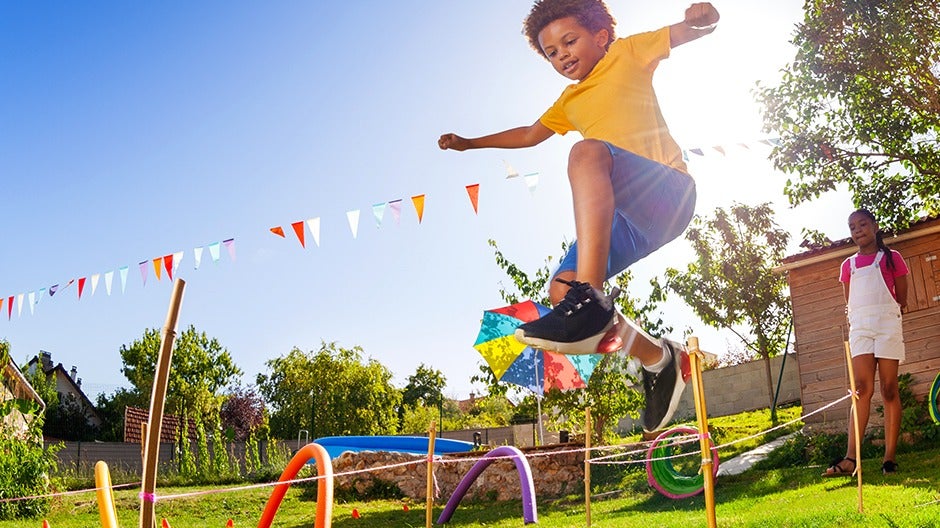
6 Critical Thinking Exercises for Everyday Life
Games aren’t the only critical thinking exercises that work well for kids. They also encounter many opportunities to build their skills on any given day.
How can you tap into those chances? Try these techniques.
1. Explain Things
No doubt you often find yourself on the receiving end of your child’s questions. Try to answer all of them. Daunting as that might sound (we know!), this helps your child learn how to formulate the questions they need to ask to make good judgments.
2. Back Up Rules with Good Reasons
Help your child understand the reasons behind rules. (A typical Q&A volley: “Please find a quiet activity to do after dinner.” “Why?” “Because your brother is asleep and we don’t want to wake him up.”)
This kind of exchange allows your child to understand why you’re asking them to do something, which fosters critical thinking.
3. Play Real-Life Problem-Solving Games
Playing strategy games—even simple ones designed for kids—develops analytical skills. You can also have fun turning household tasks into problem-solving games, like figuring out which socks go to which person when you’re folding laundry.
4. Cultivate Curiosity
Encourage your child to ask questions and dig deep to find answers. Curiosity leads to challenging assumptions and gaining new information. Ultimately it helps your child develop complex thinking skills.
5. Encourage Open-Mindedness
Help your child learn to be flexible in their thinking by giving them time to gather information before they make decisions. Considering various solutions helps kids learn that more than one way to do things can be correct.
6. Model Analytical Thinking
Our kids are always watching us. One of the best ways to influence your child’s critical thinking skills is by talking through decisions as you make them. (“I want to walk to the store. I can take a shortcut, but it’s on that dirt path and I’m wearing new sneakers. I want to keep them clean, so I’ll walk on the sidewalk instead.”)
5 Games to Guide Your Child’s Critical Thinking
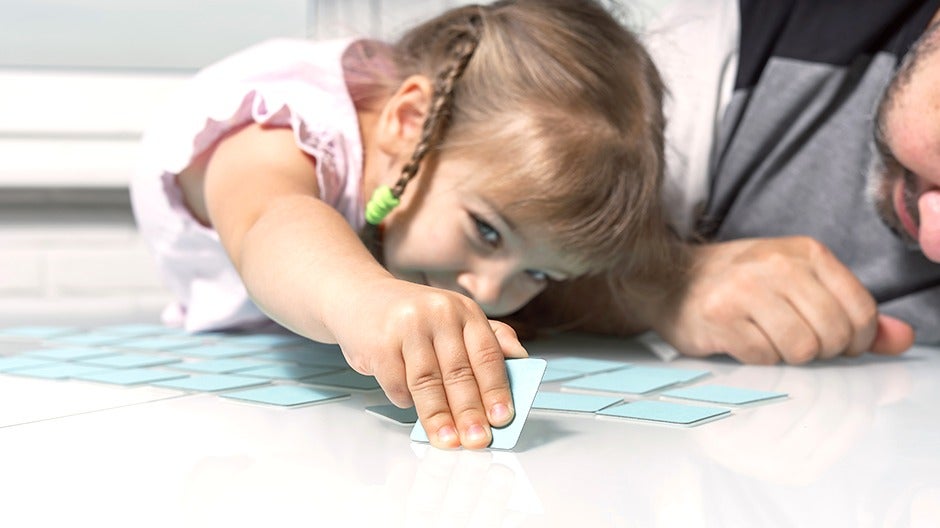
There are many educational critical thinking games you can play at home that help kids improve their skills! We’ve gathered a few we love:
This classic guessing game encourages analytical thinking and problem-solving skills (like deduction) as your child searches for specific objects based on clues.
Plus, it‘s highly portable! Play it in the car, on a walk, or even at the grocery store!
What You Need
- Nothing except space!
- Explain you’ll take turns identifying an object in your space.
- Model the game by going first. Choose an object that both of you can see.
- Share one detail about it. (“I spy something purple.”)
- Ask your child to guess what you’ve chosen.
- If your child is stumped or getting frustrated, add more clues (“The purple thing is a food, and it’s over by the apples.”)
- Trade roles so that your child chooses something for you to guess.
More Ways to Play
- Choose different rules, such as “the object has to start with A,” or “share three adjectives that describe the object,” or “make up one phrase this object might say”
2. Once Upon a Time
Storytelling is a great way to work on critical thinking skills like understanding cause and effect, choice-making, and sequencing. This game also taps into kids’ creativity (another one of the 5 C’s) through making up stories.
- Nothing but your imagination!
- Explain you’re going to build a story together by taking turns, one sentence at a time. You can give an example by reciting a story that your child already knows.
- Give an exciting first sentence that jumps into action, such as, “Once upon a time, a kid was on a rocket ship headed to Mars, when a meteor hit and fuel began to leak.”
- Ask your child to continue the story. If they get stuck, try asking them questions like “What did the rocket ship do next?” or “What did the kid do first to fix the problem?” or “How did the kid feel?”
- Continue taking turns until you come to a natural ending.
- Write down the story as you tell it, then read it out loud
- Create a book out of the story, using paper, markers, and a stapler or tape (art projects use many critical thinking skills)
- Use a prop to center the story on, like a toy or a stuffed animal
- Go outside and tell a story based on what you imagine you see in the clouds
3. Bet You Can Build It!
Designing a structure takes curiosity, planning, trial and error, and problem-solving. You can turn this activity into a game by laying out rules to follow.
- Marshmallows
- Craft sticks
- Cardboard tubes
- Anything else you’ve got at home!
- Gather your materials.
- Give your child the rules for the building challenge. (“Create the tallest building you can without it tipping over” or “Use all the marshmallows and toothpicks.”)
- Work on the structure together or each do your own.
- Celebrate when you’ve finished!
- Use a timer to add urgency to the game
- Bring the game to the floor and use bigger building materials, like blocks or plastic bricks
- Bring it outside and use objects found in nature
Get your child moving their whole body as they use planning, organization, and problem-solving skills to find their way through a maze.
- A surface to draw on, like a sidewalk, driveway, or playground blacktop
- Objects to use as obstacles
- A finish-line treasure (a favorite toy, a treat, etc.)
- Draw a maze with chalk. Try making a path by drawing borders on each side or a “tightrope” by only drawing one line your child will need to balance on as they walk.
- Add dead ends to make the maze more challenging.
- Use objects to create obstacles for your child to problem-solve a way past.
- Add a treasure at the finish to engage their imagination.
- Have your child start at one end and try to find their way through!
- Hone in on the treasure component of the maze by creating a scavenger hunt .
- Ask your child to draw a map of the maze when they’ve finished.
5. Obstacle Course
An obstacle course builds real-life skills. To get through their days, kids need to be able to remember lots of information (just think about all the rules at school!).
They also encounter problem-solving based on sequencing and memorizing shortcuts, directions, and solutions. (Think about learning how to write. Letters have to be in a specific order to make a word. That’s sequencing.)
Or you may allow your child to walk to school or the bus stop on their own. That’s all about memorizing directions.
Obstacle courses can help them practice these skills!
- Masking tape or chalk
- Jump rope or broom
- Big bouncy ball
- Play tunnel, table, or chair
- Board or pool noodle
- Log and plank
- Pillows, bean bag chairs, or large stuffed animal
- Any other objects you want!
- Gather your objects—you can play this game inside or outside.
- Design a path for your child by placing interactive objects along it. For instance, they can jump over the broom, crawl under the table, and balance on the log and plank.
- Show your child the sequence. You can demonstrate it or have them do a trial run.
- Let them start!
- Try asking your child to do the course backwards or blindfolded—with a partner!
- On a hot day (and outdoors!), add water components like carrying a bucket of water or running through a sprinkler
- Draw a map and instead of telling your child how to move through the course, give them the map to follow
- Add a fun time component and challenge your child to finish the course faster each time they do it
Cultivating Critical Thinking Skills with Begin
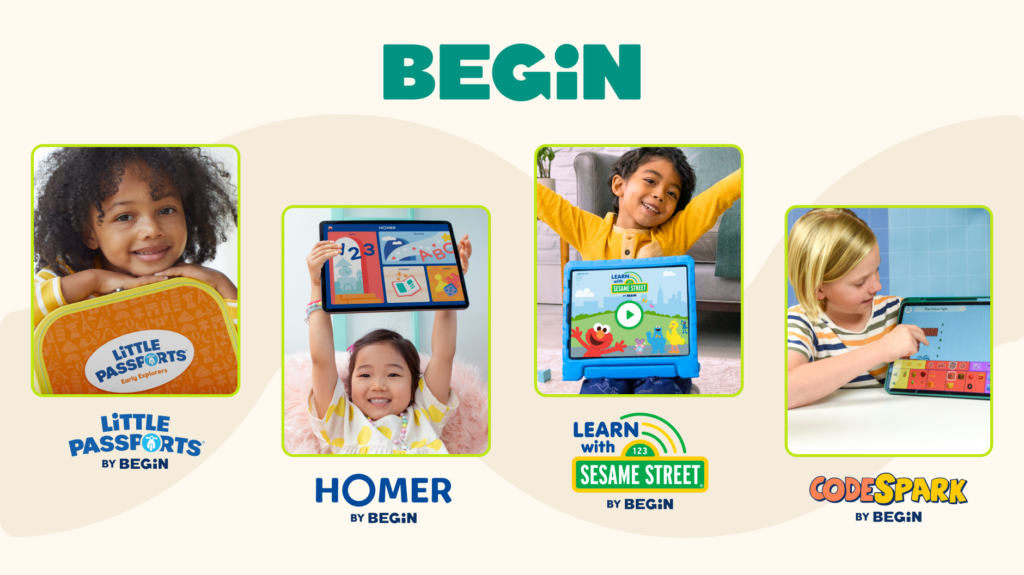
Because critical thinking is such an essential skill set, at Begin we build it into our age- and stage-matched learning membership . Through playing with Little Passports activity kits, the codeSpark coding app , and other award-winning learning products from Begin, kids can learn sequencing, make their own games, do science experiments, and more !
Take our online quiz today to discover which stage of the Begin membership is best for your family!

Jody has a Ph.D. in Developmental Science and more than a decade of experience in the children’s media and early learning space.
View all posts

Dr. Jody Sherman LeVos
Chief Learning Officer at Begin
Related Posts

3rd Grade Reading: Overview, Skills, and Learning Activities
As your child starts 3rd grade reading, they’ll be introduced to more complex texts and skills. Learn how you can support their reading at home.
Keep Reading →

Compound Words For Kids: Tips And Activities
If you’re wondering how to teach compound words for kids, you’re in the right place. Discover tips for helping your child understand compound words.

15 Fun Ways to Develop Emergent Literacy Skills in Your Child
During emergent literacy, kids learn crucial skills that lead to reading and writing. Find out what they are and how you can help!
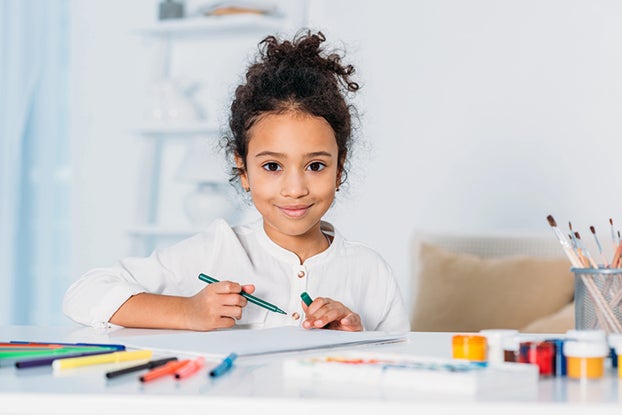
The 6 Syllable Types: What They Are & Why They’re Important
Learn about the six syllable types and how to introduce your child to each one. Also, discover how this knowledge can improve reading and spelling skills.
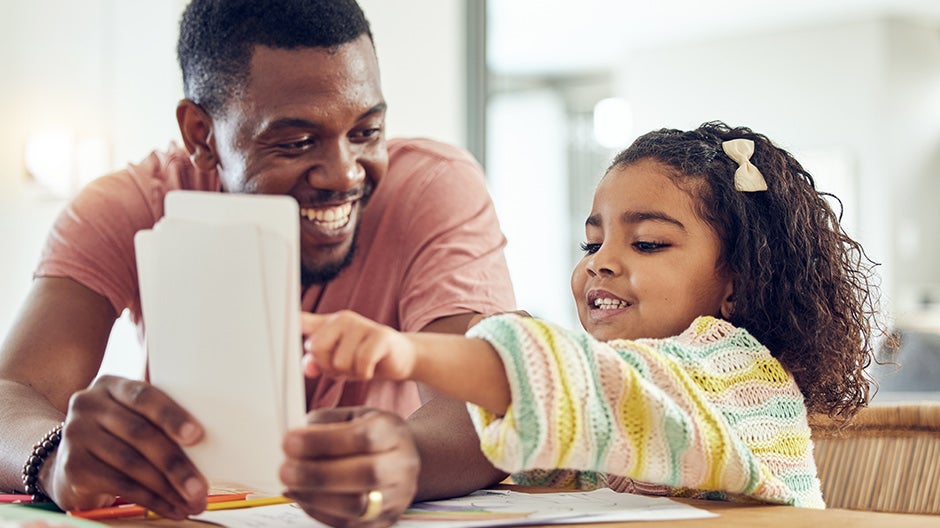
How Early Childhood Education Improves Kids’ Lives
Early childhood education sets your child up for success, both in later academic pursuits and in life. Learn why it’s important and how you can get started.

2nd Grade Reading: Overview, Skills, and Learning Activities
What will your child learn in 2nd grade reading? Discover key concepts they’ll work on and get book recommendations and tips to enhance their learning.
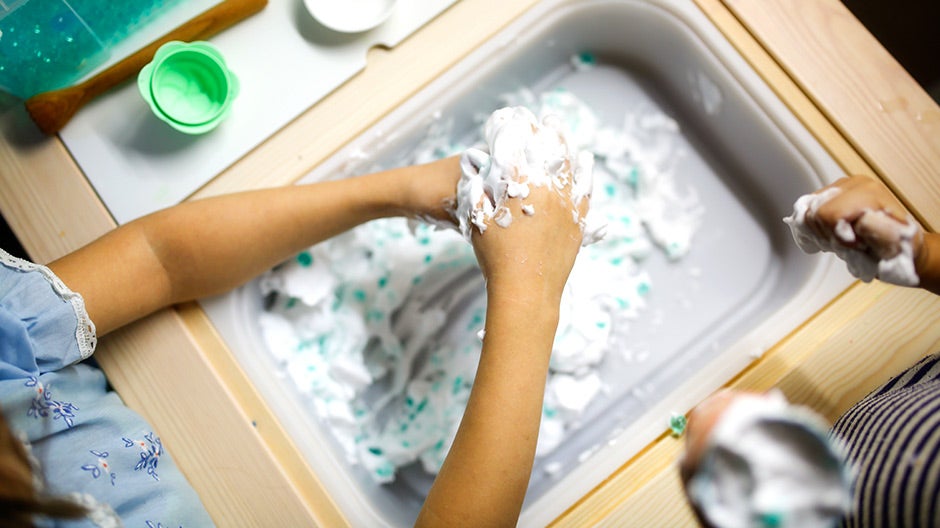
Explore 12 Sensory Activities for Toddlers to Boost Curiosity
Looking for some new activities to do with your little one? Try out our 12 sensory activities for toddlers that are all about hands-on learning and fun.
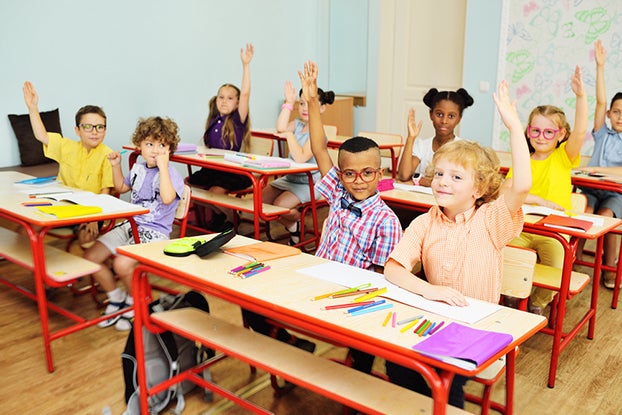
What Should a 2nd Grader Know by the End of the School Year?
Wondering if your 2nd grader is on track or whether they need some support? We’ll tell you what a 2nd grader should know by the end of the year.
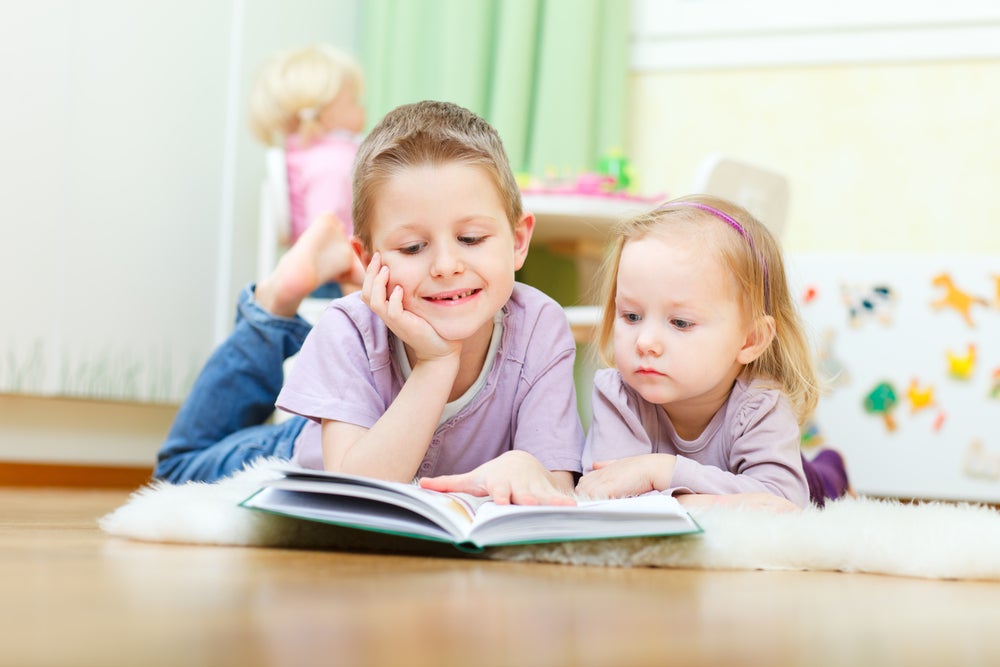
Kindergarten Reading: The Complete Guide for Families
Kindergarten reading sets your child up for a long, successful, and rewarding relationship with literature and language. But what do they need to know?
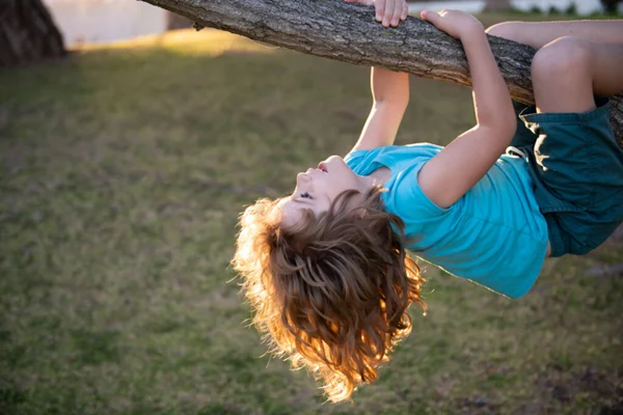
Physical Play: What It Is and Why It’s Important for Kids
Physical play is the cornerstone of early childhood development. Learn why it’s so important and discover ways to encourage it in your child.
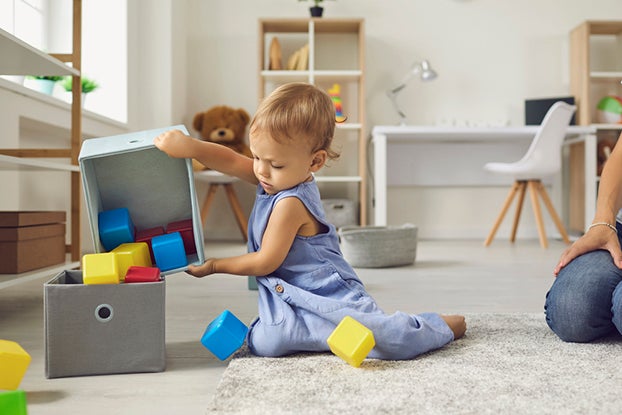
Independent Play: What It Is and Why It’s Important for Kids
Wondering if it’s time for your child to play solo? We’ll tell you what independent play is, why it’s important, and give you some ideas to get started.
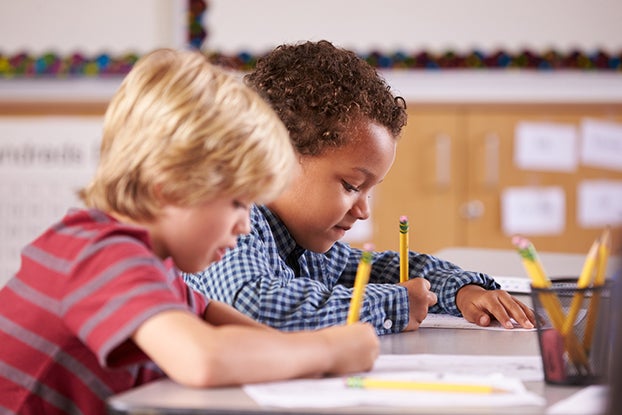
What Should a First Grader Know by the End of the School Year?
What should a first grader know by the end of the year? From reading longer texts to solving simple math problems, discover what first graders learn.

IMAGES
VIDEO
COMMENTS
Critical Thinking Games & Activities for Kids: Critical thinking skills are widely recognized as essential to equip children for learning, in and outside the classroom, and for modern life. In this post, we will explore what critical thinking means, why it is so important, and how to help build these skills in children with 36 fun critical ...
Use your thinking skills to find out the correct answer! PLAY. MentalUP offers 150+ critical thinking games besides attention, concentration, logic, language, visual intelligence, and memory games! 🚀 . The best part of the multi-awarded app is all these gamified exercises are developed by pedagogues, academicians, and game designers. 🎓🙌.
1. More-igami. This is a lovely book to introduce critical thinking to kids in the most matter-of-factly way! Your kids wouldn’t even realise the skills they are picking up while reading this heartwarming story of a boy, who has discovered the joy of origami and is ready to dive deep into the art of paper folding. 2.
This engaging exercise is one of the most effective critical thinking activities for kids, as it encourages them to use their creativity and problem-solving skills while working together to construct innovative structures with limited resources. 52 Critical Thinking Flashcards for Problem Solving. 4. Keeping it Real.
Human Knot. 10. Open-Ended Questions. Problem solving activities for kids are a great way to teach them how to think critically and creatively, and how to develop a growth mindset. We’re sure you must have also played many educational games as a kid that helped you develop critical thinking or problem-solving- skills you’re using even today.
Play Sudoku: Sudoku is a logic-based game that requires critical thinking skills. It requires children to think logically and use deductive reasoning to solve a problem. Sudoku puzzles can be found in many newspapers and online. Conduct Research: Encourage children to conduct research on a topic that interests them.
1. Online Decision Making Games . Best for Which Ages: 3 years and up. Decision making games online are one of the best choice making activities for kids to sharpen their critical thinking, problem-solving, and strategic planning skills in a fun, interactive environment.
Writing (or drawing) and silence are used as tools to slow down thinking and allow for silent reflection, unfiltered. By using silence and writing, learners can focus on other viewpoints. This activity uses a driving question, markers, and Big Paper (poster-sized is best).
6) Quirkle Board Game. If you’re looking for problem solving activities for kids you can enjoy as a family, I highly recommend Quirkle! It’s easy to play but definitely puts players’ problem solving skills to the test, and I love that it’s a game the whole family can enjoy! 7) Size of the Problem Activity Pack.
4. Cultivate Curiosity. Encourage your child to ask questions and dig deep to find answers. Curiosity leads to challenging assumptions and gaining new information. Ultimately it helps your child develop complex thinking skills. 5. Encourage Open-Mindedness.